POP Gets a New Look
POP is on vacation and will be back the Monday after Thanksgiving with a brand new site designed by friend-of-POP and very talented designer, Balin Brandt. The new site will feature a beautiful interface that allows for multiple featured posts, thumbnails for recent posts (maybe just exciting to me), and POP’s very own domain.
Look for interviews with photographers Peter Rad and Caterina Bernardi and retoucher Adam Moore of Sugar Digital and…just in…Corey Arnold! Peter Rad has an incredibly sophisticated understanding of photography and has written a deeply thoughtful interview about the trend towards authenticity and honesty and how photoshop can be a friend to those bent on capturing this in their images among many other things…Caterina Bernardi is a lovely and passionate photographer who is not only a true artist whose inspirations run from Botticelli to the graceful curves of the Sydney Opera House to just about anything that engenders inspiration, which seen through her eyes is all around us all the time.
I have yet to meet Adam or Corey, but Adam is responsible for retouching many of the images that have been seen on this site and for building a devoted following of many of today’s top advertising photographers. And Corey, well I have wanted to ‘land’ an interview with him ever since his amazing fish photos were featured in the interview with his rep, Maren Levinson of RedEye Reps. I can’t wait!!
Hope everyone has a great Thanksgiving and see you soon!
Filed under: Uncategorized | Leave a Comment
I interviewed Christine Wolheim in August of 2010. Her interview holds the honor of most read post of all time on POP. I think this is due in part to her general enthusiasm and many creative talents including cooking (she is a trained chef), painting (she has a degree in painting), food and prop styling. And not only is she a stylist, but she has her own prop shop with shelves filled with vintage and collectible dishes, flatware, platters, custom surfaces and many more fun things. She brought this same enthusiasm to her interview and continues to bring it to current commercial and personal projects.
She recently finished a project shot in collaboration with Dwight Eschliman, that she shared with me for SNAPS. Together, they created an image of everyday items that are made from petroleum products shot on a grid submerged in motor oil. The result is a hauntingly beautiful image that by its very beauty compels us to look and consider carefully what we are being asked to study. It is an interesting personal project for a stylist and a perfect collaborative team given Dwight’s iconic overhead shots and his Twinkie project in which he dissected and photographed all “37 or so” ingredients in a Twinkie.
A short SNAPS style Q&A follows along with the image. Big thanks to Christine for sharing with POP!
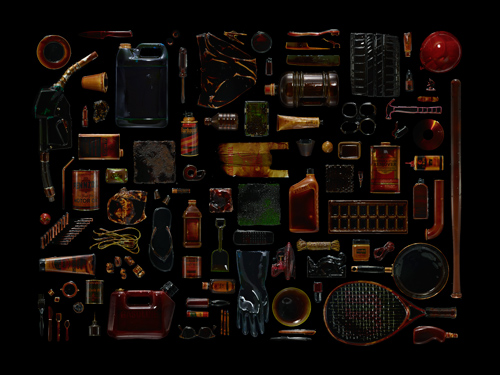
Petroleum Grid - Styled by Christine Wolheim/Photo by Dwight Eschliman
POP: What was the idea behind this project? Is it part of a series?
Well, yes and no. A photographer I collobarate with often, Maren Caruso and I had been doing series of “dissections” together for several years. What we did together involved vegetables. Then we did clothing. And then we got the idea of doing more “everyday” items, like sugar and wheat and coffee—I could not get the coffee plants back with me from Costa Rica, so we never made that one. But these dissections had morphed into not just what is in the “ingredient” but things that are made from it.
Then someone gave us a bag of coal! We wanted to make a fossil fuel dissection. But you know it just seemed so pedantic. But it got me thinking about petroleum products. Energy is a topic about which I had done some pretty political images with a different photographer Deb Sherman which I think are still timely.
POP: How much research did you do?
I started researching and of course everyone knows that Petroleum is in everything. But I was still stunned! There is no getting away from it. In the end I chose to focus on the most “everyday” items: the ones you don’t even think about because they are so much a part of our landscape. Like toothbrushes. In a way I think this is what we always deal in as stylists: Icons, classics of any given thing.
So, it took me over two years to get this image made! I had researched and shopped and then Maren and I had many dates scheduled and cancellations (when one of us got work), then she was pregnant and felt ill and then large and did not want to be up on a ladder, so she gave me her blessing to do it with someone else.
I had long been an admirer of Dwight’s (Eschliman) work, and then I worked with him for a Real Simple shoot and it hit me that he would be a perfect fit both visually and thematically with his plastic bottles image and Twinkie ingredients image, etc.
I approached him. He loved the idea and brought Dwight intensity to it. Even though I had a vision and I’d already amassed all the items, I wanted to show it all to him and let him have input and see what may come as a collaboration, or if he thought anything was missing. It was actually Dwight’s idea to immerse it in oil. (strangely Maren had said a similar thing way back when) Good minds thinking alike! Dwight was indeed the perfect photographer to shoot it with because he has a mount on his ceiling, which is incredibly high.
Even so we had to edit the items to fit it all in one frame…like I said Petroleum is in everything!
POP: How was this shot? and how long did the shoot take?
I can’t tell you any more about how it was done, cause then I’d have to kill you! No, really we shot this clean first with no oil, and intended to do as a diptych (one clean, one immersed) but the items with the oil were so much more mysterious and intriguing, or so we thought! It is hard when you look at something for so long to see it clearly any more. We worked on it, just shooting, for at least three days. Then there was a lot of post-production involved: I will tell you this: each item had to be in its own oil bath…I really admired Dwight’s dedication to the idea and the integrity of an image that he was willing to commit to so much post work (and his assistants too). It was really a pleasure to collaborate. In fact this is my favorite part about what I do, whether it be for an ad or a book or a personal project, but this collaboration and the blurring of the lines between “Fine” art and “Commercial” art. It doesn’t matter.
POP: There’s an interesting tension in this piece – it is quite beautiful yet it is about a very serious subject.
For me personally, I feel that an image should arrest you, should compel you to want to look at it. To seduce you as it were. Draw you in. Then it can be about anything you want. Personally I aspire to make images that are arresting, beautiful, AND conceptually intelligent, or they make you think, or laugh (there is a lot of irony in my work) or simply present you with something from a different perspective. I don’t always succeed, but this is what I would like to acheive.
I wish we had had it completed before the oil spill. We had shot it before then, but it wasn’t finished. But wow, we could have made it on so many covers during that time.
POP: Stylists don’t own copyright even though they are equal contributors at times. Do you see this changing at any point?
Sorry not touching this one! No, my take is this: as in any relationship, you need to negotiate….sometimes I get so excited by an idea that I forget to have that conversation BEFOREHAND. It really depends on what usage we each intend for the image. And if it involves money or not, too. It is disappointing that sometimes stylists don’t even get credited! I DO think it’s changing. But it’s not automatic; you have to ask for it. (from Publishers, etc..) The people I work with have always been good to me! Collaborating involves trust too!
POP: What have you been working on this year?
I just finished a beautiful spread in this month’s 7 x 7 that I styled with Nissa Quanstrom (I styled the food and Nissa styled the props), a new (still secret!) packaging for Happy Baby, videos for Verlasso, cookbooks for Aida Mollencamp and Cindy Pawlcyn (props) and an ongoing series of two-page spreads for The LA Times Magazine using ingredients and recipes from famous chefs for which I styled the food and the props.
Coming up I’m working on the True Blood Cookbook(!) for which I’m doing props. I am very excited as I am such a fan, and I imagine they will let us make it really fun!
Filed under: food and prop stylist interview, Uncategorized | 4 Comments
Tags: Christine Wolheim, dwight eschliman, prop styling
Jonathan Saunders is an editorial portrait photographer and fine artist referred to me by photographer Timothy Archibald. Well known for his portraits of notable business and entertainment personalities for Texas Monthly, Time, Barron’s, People, Forbes, Fortune, Bloomberg, Money, FSB, MSNBC online and Business Week among others, he is perhaps equally well known for his personal work which has a devoted following and, on his website, is the section where one lands first.
With each interview, I learn to look at the world in a new way and to think more deeply about how we see, to recognize nuances in scale, light, and expression and to feel my way into a photograph to unearth from where the photographer made the image. In the stories that Saunders tells, one is taken quickly from the familiar to the fathoms, as if walking into the ocean and suddenly dropping off a sand ledge. And with his interview, I found myself dropped into the creative depths where the transcendent lives alongside the routine and the willingness to have one’s heart broken open by the disorienting sadness of love lost or the circumstances of a stranger carry equal weight.
January 25, 2010 – 11:00:21 PM | January 26, 2010 – 7:33:30 PM
This is the past two train rides I have been on. Both of these rides, this particular piece of music was again playing in my headphones while I sat there alone. Over and over and over it played and I was not feeling the comfort I once did within it and I was listening in a longing to feel this comfort once again.
I boarded these trains, sat down and only then noticed what was taking place directly in front of me and on each occasion, it was this same thing. Only I could see and hear these things together in this way: over and over and only inside my own head.
I also try to surface the thread that runs through their personal and commercial work, the current that defines who the artist is and how they bridge the two worlds. Jonathan was very clear that his personal and commercial photography are two distinct bodies of work. Throughout his work though, I found the heart and eye of a poet and a deep love for image making matched by a strength and vulnerability that enables him to walk into a relative stranger’s space and capture a compelling portrait of them in sometimes 15 minutes or less with the immediacy that connects with readers and drives newsstand sales.

Bill Gates for TIME
This is a long interview that has been months in the making, but I had a lot of questions and Jonathan brought the same fine-tuned attention to his answers as he does to his work and art. And he tells a great story. Thank you to Jonathan for all his time and work on this. I’ve included a lot of images, but it just scratches the surface. To see more, I would recommend setting aside some time on a weekend morning for going through his site, jumping from story to story with the same sense of discovery he brings to creating it…and be sure not to miss his bio.




I had been waiting for it to happen. Then it did. Someone did, it was not me. They took you and put you in the grass, this yard off to the side, out of the way. This someone cared enough about you for at least that. Then, over time, you were eaten by one after another that fought over you, sought you out as their source then moved on while countless more kept feeding. I don’t know who you were, but I can say with some certainty, you were once mine and that I saw you like no one else ever had or will or could. You were not my source and it never occurred to me to eat you like this or leave you like this, yet.
I can still taste your scent and I cannot bury you here.
[Where I lived in Texas was very suburban yet had deer running around more than children. These deer became very unique to me and very representative of many things in my life as well as one person in particular. I had grown up visiting this neighborhood and always been indifferent and removed from connecting to these deer. Now that I was staying here for awhile, I came to see the same ones over and over as well as slowly becoming connected in deeper metaphors. Any time I would see them, I would make a photograph, this became like a law. Let the food I was returning with spoil, let me be late for a meeting, photograph the deer. I never sought them out, I let them find me, even when I no longer wanted to see them or when I really needed to, there they were. In all that time I was there, in a very busy area, only this one was hit by a car. Through a process of elimination, I now even know which specific deer this once was.]
POP: What is your background? Fine art, commercial or both?
Well I got a camera for my 16th birthday after my father found that I had secretly been making silly pictures of my face with his camera when he developed the one roll that had spent months in this camera developed. A few holiday snaps and the rest was all me making faces. He didn’t think it was as funny as I did, so I got my own camera for my birthday that year. The card literally said, “Now you can take all the damn pictures of yourself you want.” So I did.
I was in the middle of an eight-month stretch on crutches so spent a lot of time in the library at school reading American Photo magazine, how-to books on photography and photographer monographs, book by book, shelf by shelf, down the photo section. My senior year of high school I finally enrolled in photo classes and found I had a good technical head start. I was then able to intern at a commercial studio instead of attending high school which was invaluable. I went from reading books and fumbling with my camera on my own to assisting national ad campaigns when I was 17.
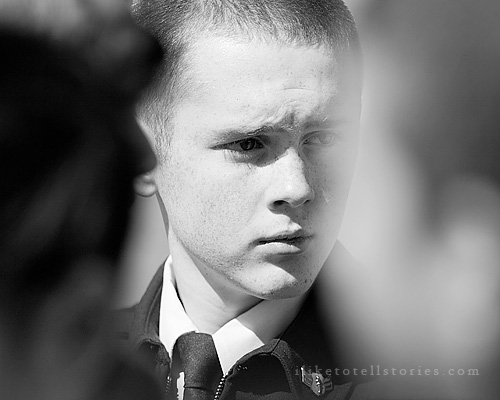
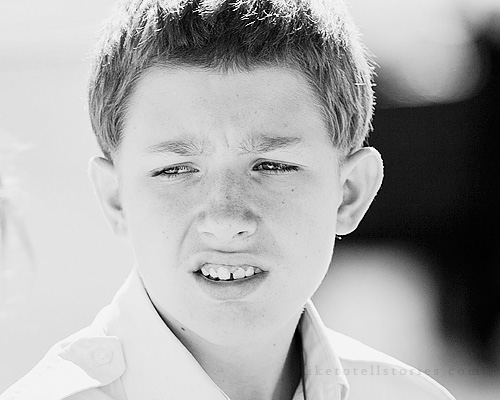
You Look Like Me When I Was You Before I Became Me
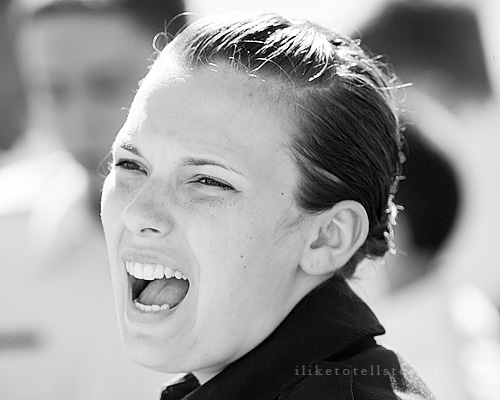
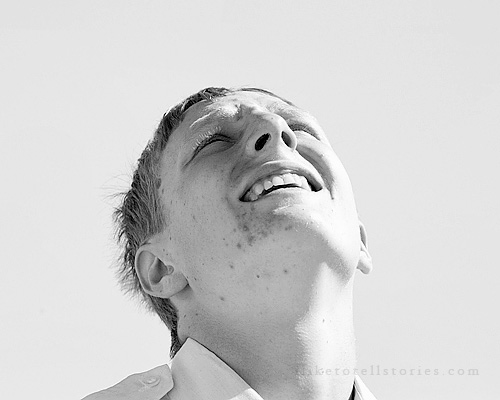
[Before I got hurt in high school and became unable to join the military, I was JROTC and dreamed of a military academy attendance and a career in the military. I wanted to fly. I was JROTC in Texas and now this is me photographing JROTC at an air show, in Texas. I had gone for many other things, but finding this, seeing this, this day in the fall of 2010 was just more than I could handle. I had received some personally devastating news shortly before and this all tied together visually with what was in front of me. I couldn’t stop making photographs, there were too many, too fast. I got overwhelmed and upset at one point during these and just quit. I walked to my car with a severe sunburn and dehydrated. I don’t remember driving to where I stay that day or how I made it.
I had started the day to photograph just a few planes and ended up on three different flights. A vintage T-6 called Miss Texas, a vintage B-25 Bomber and a ride with the Golden Knights Parachute Team who at one point in my life, I had wanted to be.]
All along, I kept reading that many I admired went to the Rochester Institute of Technology so when it came time to find a college, I applied to many but chose RIT. At the time, it was very divided, photojournalism, advertising or fine art. One had to choose and that was confusing for me as I enjoyed it all. And really at the end off the day, I just wanted to make my own photographs—the specific career within photography seemed secondary. So I blew off the curriculum and just class surfed.
During this time I also got accepted to and attended the Eddie Adams Workshop, I was only 20. Here I was meeting with and listening to the very photographers that I had just read about shortly before. All because I submitted twenty images someone important found interesting enough to accept me. While there, I won one of the assignment awards. I still wish I could go every year.
I got back to RIT and it felt small and limited, so I just hibernated and printed my own work all the time while class surfing until money ran out. I left RIT before finishing the degree. Everyone was going to NYC or LA and neither felt right for me. I chose San Francisco randomly as I knew nobody, had no connections and wanted to build myself up on my own. I got to SF and used a Communication Arts Photo Annual to find Bay Area photographers to assist. For two years I assisted a small handful of editorial photographers who were far too nice to me and with whom I am still friends today. I would go for walks and just photograph. I lived in 5-6 places in those two years and had a couple hundred rolls of film I couldn’t afford to develop. I kept a mini-fridge full of it all for that ever looming ‘someday’ when I could deal with it all. I also once got shipped 50lbs of outdated expired film an assistant friend in NYC was told to throw out. That helped and also changed my life in some ways as it was free to shoot, even if it was cross-processed so I could print it out myself later in life.
During this time, about a year into SF, I did a blind drop at the LA Times Magazine. I picked up my book the next day and it didn’t look touched. A week later however I got a call to photograph Francis Ford Coppola at his vineyard for the cover. I owned no gear, had never been paid to make a photograph before and had shown what was essentially a documentary photography portfolio. A friend I assisted loaned me all his gear and everything that could happen on a shoot happened. The story of this assignment and how it played out could be its own novel. It was my first paid shoot, my first time using a light on a stand for a portrait, my first a lot of things. At the end of the day however, I had the cover and the inside spread and a year later, one image I made of Coppola that day would be a full page in the Communication Arts Photography Annual. I did two more covers for the LA Times before I left SF about a year later. Short of one other job I did for USA Today, documenting the winery business from predawn to dusk in one day, I was still assisting and photographing whatever my life was all along as well, throwing the undeveloped film in the fridge.
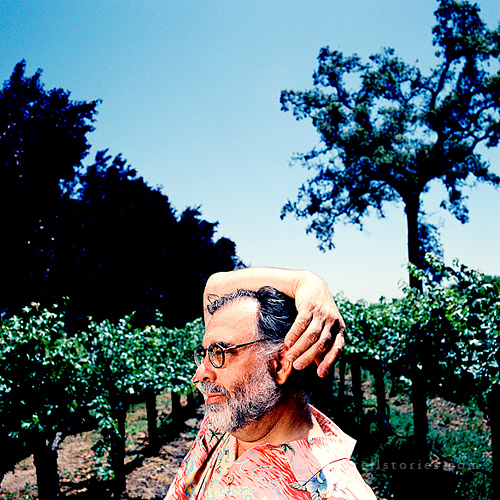
Francis Ford Coppola for LA Times Magazine
At this point, I re-enrolled back at RIT and went back for a summer independent study with an awesome professor so I could do nothing but dive into all that undeveloped film. I printed from 8am-9pm for almost 10 weeks straight and burned up all my money and credit and didn’t even get through it all. I still have handfuls of film from CA unedited or scanned or really dealt with.
After this, I went to NY and through a photo editor friend started shooting portraits. I feel like it all found me and I liked it that way. I never sought out to be a magazine photographer. I also didn’t really say no to anything. I just needed and wanted to work. Then it guided itself. Most magazines I worked for never saw my portfolio until websites became the norm. New clients came from PE’s that moved around from magazines to magazines, saw or used my stock or that somehow came across me. I really enjoy shooting people in the news or people of remarkable accomplishment. The randomness of how it works is an incredible joy. I never stopped photographing for myself or making things for me then or now, but there became a really big difference in the type of work I would get hired to make and what I did for me. I actually really liked this too. They are different beasts and tasks entirely, sometimes they overlap, some times they don’t so much as it’s the nature of the assignment or situation. I like this too and both are still parts of me.
Someday soon I hope to pursue an MFA so I can teach and not too long ago was awarded a BFA by RIT based on Merit (and a check). Frankly however, the study has never stopped. I still go book by book or site by site. I adore the constant learning and inspiration. That part has always felt the same kind of good, all along.

George Carlin for TIME
POP: You still shoot almost portraits exclusively. Have you always had an interest in people?
When I started, my portfolio was all large event coverage (marches on Washington, protests, etc.) along with some candid family moments and one documentary of an abandoned hospital with no photographs of people. I still have my original portfolio intact. But I got hired to make portraits and that just snowballed and was what I was known for and asked to do. I personally just love photographing. Assignment photography is mostly about people. Formal portraits were 99% of assignments I got and those seem to follow the traditional editorial script. Arrive 1-2 hours early, find a shot, set up, shoot then get the take in as fast as possible.
The nature of my clients (almost all news magazines and business magazines) and subjects meant that I never got to meet or sometimes even see them in person for more than a hello before I had to get ready for the 5-20 minutes I was allowed to actually shoot. So often, it was try to build one or two portrait sets or spots then use the time I had with my subjects as efficiently as possible for as much as possible. I read stories of other photographers that get all kinds of time or have meetings first where giant ideas and plans are discussed. But I read those and think I must be in a different profession as that is just not how my assignments are for the most part.
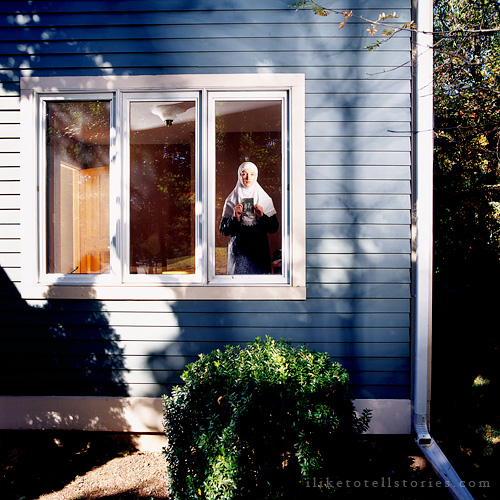
Tiffany Nicole | Awaiting Return of Imprisoned Husband
I am never given set budgets or allowed the funds for large crews, pre-scouts or even hair or make up. Sometimes it was frustrating but I enjoy being a one-man show; an assistant and the subject, let’s go make something. Here’s the time, here’s the place, here’s the name, make a photograph happen out of thin air. Occasionally on assignments that mean a great deal to me personally, mean more to me than the clients budget even allows or when I could, I would go early or if possible the day before on my own, unpaid, because that is what I had to do. Sometimes I would rent more gear than budget allowed or do things that may mean I made no profit at all, but I had to get it done how I was comfortable tackling the shoot.
Often, it’s a battle between the practical realities of business and what my brain or heart desires. But yes, I like making portraits very much. It’s a challenge and always gets my heart racing for the right reasons. I am trying to do more live coverage of situations or events combined with portraits if it fits the story or happening. This seems to be trickier than it should be and I really cannot see why. Images have never been more in demand or desired, yet there is a vacuum of lacking funds, lacking permissions and short sighted ambitions. The world is so wonderful and I don’t want to miss anything more. I just want to go make things. Today.
POP: Portrait photographers whose work inspires you or whom you admire?
Way back in high school I used to look at a lot of fashion magazines. They were using the most photography and many times, they were the few magazines that were pushing against the norm. They are still some of my favorite to seek out. I became instantly amazed by Raymond Meier and Richard Burbridge and Hiro before them. Burbridge’s portraits always sorta got under my skin a good way and he was such a good technician, it was hard to not be impressed. Then with Meier, it was also just how consistently amazing he was no matter what he shot, not just visually but how flawless the craft was. The what didn’t matter—shoes, man, woman, purse, house, solo portrait, group, it was always solid and perfectly executed every time.
Then a few years after I found him, I got to go on a tour of his studio. The studio was super clean and sparse and only what was needed was readily on hand. He picked up one small light and said you can shoot a whole job with this, let it flare the lens, point it into the lens, who cares, just know what it does and how to use what it does for your photograph. At one point, we walked by his desk and on his desk was a giant calendar that had almost nothing on it. Many days were empty but then every few days, it would simply say, Vogue, Italian Vogue, Harper’s Bazaar, whoever.
I thought that calendar was so awesome and decided then that if one could just work everyday for themselves making what they love, then every so often, make something for ‘work’ or have a calendar like that, well, then you’re doing alright in life. He was most excited about his personal work he shared that day too, all that great stuff for Vogue and the majesty in all that, yet here was a man looking right at me excitedly bragging about these flawless, large alternative process prints of a something he shot only because he wanted to.
POP: What of your ‘style’ do you bring to a portrait shoot? Some portrait photographers have said they shoot in their own style regardless of whom they are shooting or shooting for.
This is a good question and tricky to answer at least when combined with this example. It comes down to what kind of assignment, who is the subject, who is the client and what are the specific parameters I am given to work within for the goal of the client. The short easy answer is, I have never been in, nor has any photographer I know, ever been in a position to just say no to whatever job they feel isn’t absolutely perfect. I have had great assignments that fit me very well but this is a business and I want to work. I take a lot of jobs that are simply jobs to get my clients needs done to the best of my abilities.
I make the most of these jobs for myself too or often if the situation allows, shoot for me in addition to what the clients need. I was hired to photograph on a white seamless not so long ago. I liked it, the subject was great and I did just as required for the client very well. The subject was great, had a wonderful story, we had some time and we got along. So we took a long walk and I made all kinds of photographs in addition to the seamless photography. I shared them with the client and the client was happy to see them, however, the task I was hired and the goal of the client was seamless and that is what ran. End of the day, client was happy and I got some photographs I enjoy a great deal.

Joseph C. Muscari | Alcoa
I have always struggled with many aspects of this kind of thought on assignments. On one hand, I completely relate to this attitude—wasn’t this photographer hired or sought out by the client for how they see in the first place? But the reason for even hiring this photographer can be tossed out the window by the simple practicalities of any shoot.
When I get an assignment, of course the client’s needs and the willingness of the subject are taken into account. If I get an assignment for a magazine, I am not going to go out of my way to make a photograph I know does not work or is outside the scope of what I know they will, need or want to run. Ideally, there is an overlap in what they need or desire and what I want to make or see. That and those moments are of course the most rewarding. It’s this overlap of right person for the right job for the right client that keeps me assigned again. When I get an assignment, I want that client to love what I made. I want another assignment as much as I want to make an amazing photograph. To me, the nature of assignments that involve other people in any way are by very definition of the particulars, as clichéd as it may be, a team effort, when each person’s role works out, that to me is the most rewarding and exciting. Next assignment please.
POP: With only 15 minutes with a subject, how do you prepare and then work with your subjects on location?
The way I go about anything is to be as respectful as I can, professional as I can, while also just trying to be the best of myself. I try to remember too that from the subject’s point of view, it is a very vulnerable position to be in to have a stranger come into your life to represent you on such a large scale. I do what I can to make people comfortable with that in the short time I am there.
I shoot only location work so often I do not know what I will shoot or see the location until I arrive. I like working off the environment of the subject so much that when we first talk, I will often just ask them what is unusual or special about their space. I of course search what I can about them online too before the shoot and see what about their presented history would work or may work visually as well as find some common ground with them in which I feel I can discuss or ask questions. People are fascinating and hopefully, the right few questions in the overlap of their lives and mine, even if seemingly superficial, can make for good connections or sparks for a way to approach them photographically.
When I photographed Billy Ray Cyrus, I shot him in a field with a dirt bike, a fence, his dog and sort of a sweeping view behind him for a sense of scale and place. I thought this shot worked great for the magazine and moved on to the second shot that was essentially a wall of trees and Tennessee greenery where he told me a story about a large bird he found there one day and nursed back to health. Now that bird follows him around his land.
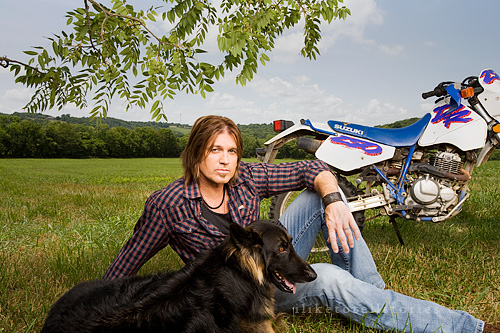
Billy Ray Cyrus for People
The plan was to bring his other motorcycle down and shoot him on that. As I was setting it up, I realized I couldn’t shoot what is essentially almost the same shot with just a different motorcycle. So when he came back from changing, I explained “Let’s just have you stand back in the brush a little and make it more about you, your personal style, in this land you love.” It wasn’t as straight forward. He agreed to my idea and we shot a few frames. Then he basically stepped out and was like, why aren’t we shooting this other motorcycle again, what are you doing? I couldn’t explain it as fast as I could just show him the back of the camera. I figured, he’s a smart guy, he’s on camera all the time, he’s been around, he knows how to look at himself, just show him. He lifted his sunglasses, looked at the screen and then stepped back in. It’s a give and take whenever one photographs someone. That to me is what makes it so exciting and wonderful as I can be as surprised by something my subject brings to the table as I am by my own ideas.
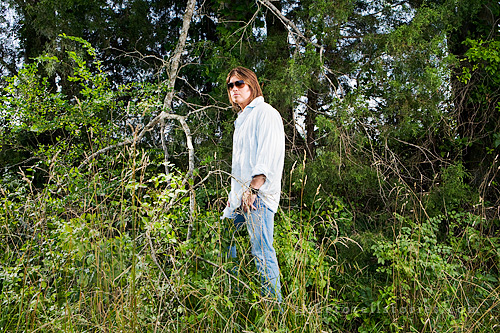
Billy Ray Cyrus for People
When do you consider a portrait successful?
I’ve often gotten odd enough or off the map enough that a subject looks at me and says why or what are you doing. Usually I like to think I am pushing my own boundaries of vision and or trying to make this 450th windowless, beige, conference room, with man in a tie, look as interesting as I can. The default, used too much answer that I always fall back on when talking to a subject, is something along the lines of:
It’s my job to make someone quickly flipping through a magazine, maybe forwards or backwards or maybe even over someone else’s shoulder at some airport or somewhere, stop and want to read that caption, want to read that article, want to learn more about that person. If I can make someone have a knee-jerk thoughtless reaction to a well executed, peculiar, different, wonderful, or maybe even just odd looking photograph stop and read, I like to think I did my job well.
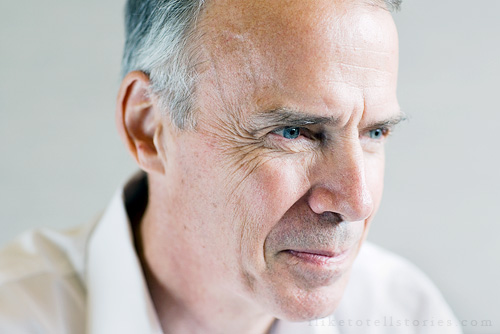
Roger Faxon | Chairman and CEO of EMI Publishing
POP: Some of my favorite portraits of yours feature the subjects with their eyes closed—Seth Godin and Daniel Kahneman, Psychologist and Nobel Laureate. You also photographed Rush Limbaugh with his eyes closed for TIME. How did you decide on this approach for these subjects and what were you trying to convey?
This is a great observation as I didn’t even consciously put this together myself. I know I like closed eyes for a list of different whys but these three are all sort of different to me in nature at least in the how of their creation.
Seth Godin I had actually met many years before on a photo shoot that I was assisting. He was off my radar in the years before I got the assignment but when I got the job and looked him up, I remembered Seth right away and Seth was actually using the rights to the image I had assisted on for his own marketing. I could even remember watching Seth make the expressions in this image as the strobe went off and even how the photographer had lit it.
So now it was my turn to photographic Seth and honestly I was a little intimated. Seth is a really smart guy and knows the photo shoot routine, is photographed a lot, so I knew going in it would be memorable again. His office space was pretty interesting so I was able to have I think three or four different sets mostly ready to shoot him in one after another. It’s a large mostly open space so I could hear him conducting a potential employee interview, conversing on the phone and going about his business as I set up. Listening to his mind work was the right kind of scary. There was a dichotomy in my head as I listened that made me want to work for him while at the same time, again, made me completely intimidated. The man is a thinker. The man is ruled by his brain.
So we shot one set and he went through a very calm set of expressions like I wanted and even started being playful with his expressions, he was great. As we went from set to set, I could tell his interest and ability to keep putting up with a photographer was fading. The last set up was a close set up and I told him, just a few more. So I shot a handful, then really just wanted a photograph that at least appeared to have his mind at rest. What is Seth like when Seth is not thinking? That to me is what I saw when I chose to share that frame. Seth was great, when I left he gave me a book and an action figure of himself and thanked me for being professional. I always keep that memory close like a trophy. I even entertained putting it on my business card. “Seth Godin called me professional.”

Seth Godin
I had gotten the Daniel Kahneman shoot pretty last minute and had started a set on his balcony overlooking New York City. It was dusk and the balcony was narrow and I was just having a hard time getting my light right fast enough for the fading light. I had a light inside mimicking the window light and also a light outside. It was starting to snow. I’d left my coat inside as time was too short to deal with it and I was trapped out there by own light, we just had to shoot so I was shaking, the light was too close to the balcony ledge, so I had my arm around it too while I shot.
I remember him just seeming annoyed and bored while he drank his coffee also standing out there in the snow with me, shaking and cold. I didn’t get many frames but it ended up being a photograph I like. As we were packing up inside I saw this little booth or nook he had. I always want or strive to have multiple shots and knew I could throw it together pretty quickly. He agreed thankfully and as I was shooting, trying to get the reflection in the table to look more interesting, he just rested that way and he frankly seemed to fall asleep. I got a frame or two of that and knew I had it. We were done.
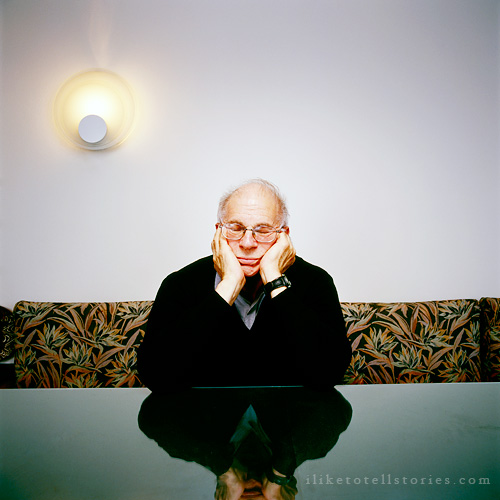
Daniel Kahneman | Psychologist and Nobel Laureate
The shoot of Rush Limbaugh was actually a lot of fun. I didn’t think I would like him as I cannot say I agree with much he says. But it was really interesting and I remember him, at least in the context of this shoot, person to person in a tiny, windowless room in front of black velvet, being professional and likeable. The Abu Ghraib prison photos had just been released, so when I looked up his previous day’s transcripts to do some research, I read that he even said on his show that he was going to get photographed for Time and that maybe he’d show up with a hood on his head to look like a prisoner. This was of course a sarcastic line from this show but when he came into the room, I asked, “Where’s the hood? I heard you say I could shoot you that way, do you have any idea how famous you’d make me if I could photograph Rush Limbaugh with a black pillow case on his head?” Well, Rush burst out laughing and from there on it was ‘on’ so to speak. We spent much of the shoot laughing.

Rush Limbaugh
Another side note here that I never knew until I photographed him is that Rush is deaf or very hard of hearing and has a Cochlear implant. So often, he is shot from the side where one cannot see it. During our shoot, he kept turning his head as he didn’t want it photographed. At one point when I wanted him looking straight at the camera I don’t think he trusted me. As again, he always kept his head to the side. So I shot a Polaroid and handed it to him. You couldn’t see it and that I think combined with the constant joking, made him relax a little. Now, when I look at that photograph with his eyes closed, I think of Rush, quietly laughing lost in this world of his own thoughts.
POP: When you are photographing someone, what inspires you?
Well I would think this again depends on the context to a degree, assignment or otherwise, but really, I am not even sure how to answer this. We are all a product of the visual history before us and that surrounds us and I like to think its my brain and heart reacting to whatever is front of me at a given moment that inspires me the most. What is it about this person, this place, that I feel and react to the most in the moment I have to make something. This awkward, wonderful, difficult, easy, moment, that alone is the most inspiring. Trying to lose myself in the act alone is one of my favorite things.
Then I hope to build on what I reacted to in the past to make it different, to make it as unique and me as I can. My desire would be that when someone sees something I made, they know it is mine right away, they don’t need to look for a credit, they simply see it and think, “Only Jonathan would make something like that.” That thought alone is sometimes motivation enough for me to push myself as far as I can.
There are a lot of greats in every discipline of photography and I think looking at my own work, I can see far too many of my influences or loves in me. I once hounded a photographer I really admired until they met with me and one of the most important things they told me was that we cannot escape our influences, we have to push through them. So that getting lost in the push is where I find the most joy.
I still look at too many books sometimes, too many sites mostly these days. It’s as motivating as it is intimidating. I just love looking at all I can.
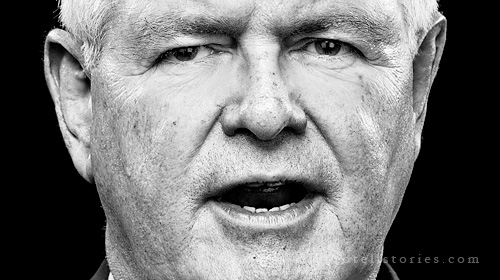
Newt Gingrich for TIME
POP: You shoot primarily editorial. Do you also shoot corporate portraits?
I do and have done everything from some annual report work, corporate event coverage to headshots. I did some really nice straightforward head shots not too long ago that I keep finding used in new ways. That feels good to know and to also see the client was happy with what I made. I’ve done some work for EMI Music that was used in-house and I think came out wonderful and also was just contacted by a writer I shot for MSNBC Online who wanted to use my head shot for a book. I’d like to do more of this work frankly. I like shoots where others are involved as much as I enjoy being a one man show pulling something out of thin air. They are both great photographic challenges for very different reasons. I find I do my best work when all my assignments are all mixed up. It keeps the brain alive and pushes me in new directions.
POP: How is your process with your fine-art work different from the way you approach commercial portraits?
In many ways, they couldn’t be more opposite and frankly, for me, they should be really different in most usual assignment circumstances. So the bigger question is why do you make and share work and how, for who? For me, this matters.
Me photographing a lover because I am in love or me photographing the sky because my heart is broken, is not that same as photographing someone in a conference room/set/their home where there are very particular client needs in place. Now I can bring all those emotions to a shoot and apply them when the assignment overlaps whatever emotional state I am in, but is that the correct thing to do for my client’s needs? To me, this question matters. So the situations are, or usually are, quite different with different goals.
Right time or right place or right image. My site is for me at the end of the day because I love making things. There is an assignment section, as I believe I can do many types of jobs very well, but that is not why I make things.
POP: Your personal work is quite narrative based, yet you shoot portraits for your commissioned work almost exclusively. Are you interested in shooting more narrative editorial or advertising work?
I would love to. It’s just that 99% of my calls are to shoot someone I never met, in five minutes, in a place not of my choosing. This is the nature of most assignments. So the nature of the work doesn’t always lend itself to these types of photographic adventures. These types of images or approaches are not always what is appropriate for the client either, but when it all overlaps or I can stretch it, it does get interesting.
Golden Knights
POP: There is so much intimacy in your personal work. What happens to this when you get 15 minutes to do a portrait of someone you don’t know?
Well I am still me, I cannot escape or run away from who I am even when I try. So by default of being me, there is always some me in there. Many times, the intimacy just vanishes as its like trying to put a square peg in a round hole. Sometimes, with the right subject, they understand and or you find that common connection to them and try to embrace it. I am pretty open, talk too much and lay myself out there to be vulnerable. I like to think some people can sense this and then there is a connection. Other times, it’s all just a show or you fall back on previous experiences to get through or find some beauty.
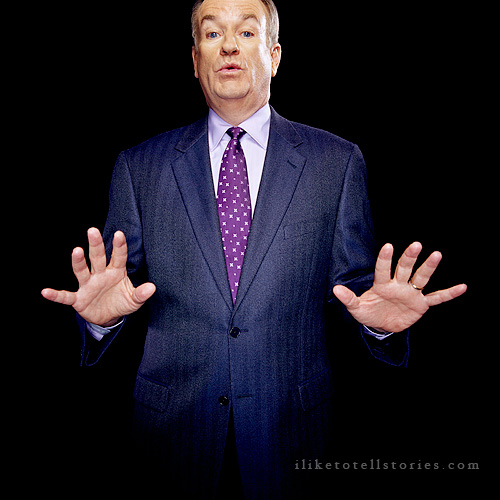
Bill O'Reilly for TIME
The tasks are very different to me and this one rule of the same thing all the time to me just doesn’t fit. I think often as well that it shouldn’t. Of course me photographing my 450th white man in a tie in a windowless beige conference room with 1h to set up and 5m to shoot for a news or business magazine isn’t the same as me spending an hour meticulously exploring a new space or area because my heart is breaking or I miss someone lost or the joy of someone new. They aren’t the same and shouldn’t be. Yet this overlap of me being me and seeing how I see, mix.
I got known by one editor for pulling things off against silly odds. So I can remember this PE calling me and saying, the subject is not attractive, rough to deal with, the space is awful and there is no time, so we thought of you… While flattered that the PE knew or trusted my attempt to make it grand, I do think I would like to try a pretty, nice person, in a pretty place, with lots of time, I just never get that call. I like the challenges, I like working. If I didn’t go through all these things, I know in my heart I wouldn’t be able to make the things like Roswell [below] either. So while not visually so directly related, it is, very much so.
POP: Your stories are very personal. Do you consider them self-portraits?
It took me a long time to really see what I was doing. But if anything, I think of them as letters. I use to keep what essentially were large journals. I made about five over the years and when each 100-page book was done, even if it took 30 days or four years to get there, I gave them away. I didn’t consciously, at the time, think of them as letters. It just felt correct. Now I see the site as a simple continuation of that. Some are or for or are lost in the thought of someone specific, sometimes a mix, sometimes its just for me, a letter to my future self so I don’t forget. I am not really sure and try not to get lost in the why, even if I think too much about how it all came together or what my true sources of thought were. Someone once referred to my stories as each being a block in a pyramid, I liked that idea, even if I don’t always think it fits or see my stumbles along the way.
I think photography itself, by definition, is only ever about the one making it. I can show you 1000’s of photographs of one person that I have made and you wouldn’t necessarily know or maybe understand that person any more or less than I do or in any real way at all, but you’ll learn a lot about me.
I see hundreds of photographers go to far away lands and make photographs of these exotic places I will never go to. But I don’t for a moment think that defines the place, or really teaches me anything more than what that place looked like to that photographer. That for me is how photography is and clearly, I think is wonderful.
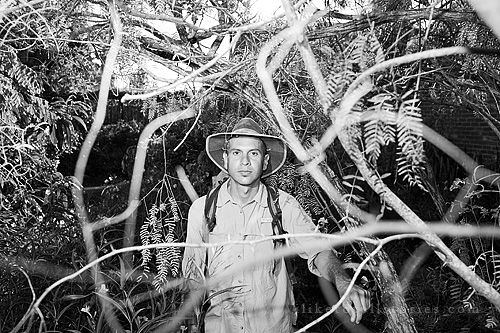
S.Matt Read who walked the perimeter of Texas for Texas Monthly
POP: Your site is called I Like to Tell Stories. What kinds of stories are you drawn to or do you feel compelled to explore? Both for your fine art work and editorial?
I enjoy the happenstance of life. The things that happen or one sees because they are just aware of the world around them. Paying attention to the everyday drama of an errand to Target can be as dramatic as a giant political drama for a magazine to me if one pays attention correctly. They are the same, the gravity of this human condition we all experience exist on the same plane. Real life is more fascinating to me to than make believe or created performances only meant to titillate. Both of these are exciting and have their place in the world, but for me, the joy is found in facts, in reason, in purpose, even if only a memory explored or a desire desperately truly wanted. I hope I bring a unique voice or way of seeing these things to the table and I like to believe that is why people look at my site or hire to me make things.
When I first started reading or visually paying attention back at 16 in those libraries, I read something Minor White said that basically was, “One could spend their entire life photographing the block they live on.” I took this to heart in that it’s not where you are or who is in front of you that makes a photograph, it is you. I think one should be able to photograph anything anytime anywhere, make something amazing, tell a good story, at any moment of any day, simply because of who they are.
So before I left Rochester, NY for the last time, I went to Minor White’s old block and made a book of pictures there. The smallest detail can become so large to me and I like that, very much.
POP: Do you look for stories in your daily life?
I feel like things find me more than I go look for them. So many photographers have these large grand ideas and make a very calculated effort to achieve whatever goal they preconceive. I could never relate to this very much as it removes or limits what possibilities of happenstance I enjoy or may see. I am even jealous and wish sometimes I could work that way, but it just never feels correct in my heart when I try. I don’t want to have a goal or have to make an arbitrary list of whatever to get me out the door or on the path to discovery. I just pick up my machine and start looking. It takes a faith in myself of sorts I imagine, but I’d rather be found than go looking.

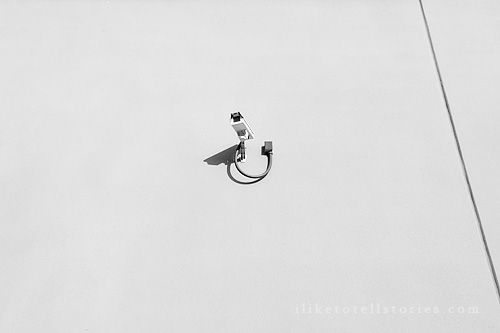

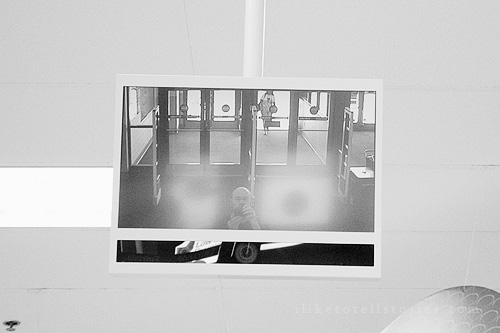
POP: Where does the inspiration for your personal work come from?
The photographers I admire are countless. But lately I have realized a few distinct things. There are all these details in my desires and daydreams of or about life that I realize tie back to very distinct movies from the early 80’s: Vision Quest, Starman, Taps, Falcon & The Snowman, War Games, The Dark Crystal, Empire Of The Sun. What they have in common is that they all evoke a sense of awe. Much of what photography or the making of things is a person’s need or desire to capture or create a sense of awe.
I think for me, that time in the early 80’s when these movies hit me, is that they gave me this sense of in stories and daydreams that coincided with an awe I felt for women. Then a few years later, I saw Koyaanisqatsi and not too much later, Sherman’s March by Ross McElwee. One about the awe of life, earth and sound. One about the pursuit, confusion and awe of women. This I think was a dangerous combination for any young man with a camera whose first profound book discoveries were Mapplethorpe’s Women, Emmit Gowin’s photographs of Edith and Galassi’s Pleasures and Terrors of Domestic Comfort. How does one not just photograph what they see or love everyday after all these get mixed together? These things go after, fight at, struggle for and within the things that define life itself. For me, I am not sure what else there is as its all the same thing.
POP: When did you start to document your daily life and did it shift the way you engage with friends, partners and everyday situations? Or were you always looking for the narrative?
I couldn’t really walk (crutches) when I first got a camera and I had just moved high schools and I didn’t have friends or a girlfriend, so I just built things or made things out of what was around me. It is what I have done ever since I picked up a camera. It seems like what they are made for. Assignment photography was really hard for me for a very long time. In college, I distinctly remember the conversation I had with a professor. The assignment was due and I had not done it at all as not only did I have no interest, I was also intimidated. Yet I had brought over 100 work prints to class that had nothing to do with anything really. So his response was, well, give me an F for not doing the assignment or compliment me on not having left the darkrooms for two days. Then it was Thanksgiving break and he gave us an assignment to just shoot whatever we wanted, a diary, journal, whatever we wanted, just bring back pictures. I was like, well, I do this everyday already. It was the first book I ever made.
Now what I find exciting is that sometimes I will find a narrative while building or noticing another just in what I make everyday. I’ll be in front of the computer, editing or looking or writing one story when I realize 10 others, all connected, or maybe I did the same before, or maybe I remember that this moment I connected to because of a scene in a movie I saw 20 years ago or a love I just found yesterday or longed for all along or realized too late. It seems the nature of just making things that things find me or find themselves. I have laughed out loud and cried just sitting here connecting all the things I couldn’t or didn’t always see while making them.
I never really thought about how it shifted my relationships until I told a friend about a journal page I had made about her. We were only friends but I wrote about something in it and told her about it. Without ever reading it or seeing it, her just knowing I had written something down we both shared was enough I guess to scare her as she dropped me from her life and told many mutual friends I had done something inappropriate. This was before the Internet long ago and to this day, to the best of my knowledge, she’s still never seen it. I will always think what I wrote was beautiful and if she cannot understand that, she wasn’t the friend I thought she was or we just never understood one another like I thought we had.
Since then, I have been far too open with what I make to a fault. I started a new relationship shortly after this incident and as I lived in a small studio, with my walls and journal table out in the open at the time, I would just let anyone see anything. I never liked secrets, I cannot keep them anyway and they only lead to hurt. So since then, ten years now, I try to live without them. I woke up one morning and found this new relationship I had started sitting quietly with this huge journal on her lap reading every page. It was hard, but I felt a great window into who I am, how I make things and how I live. I asked if there were questions. We talked and we were then together for a very long time. In my relationships since, well, my site is right there and I have yet to be in a relationship since I started it that hasn’t seen it or known this part of me long before we got very far. I have even had a relationship seek me out because of my site, go to great lengths to meet me in person only to then hate me for it. It’s really hard and can be confusing.
These 7 Days, These 7 Nights
For the most part, I think I have just been really lucky in that I found some amazing, very intelligent, beautiful and understanding people along my ways. I’ve made some mistakes, been duped and hurt people I loved when I was trying to make beautiful things out of painful things and I have done what I could to correct and protect those I love from ever doing it again. It is really complex and I’ve found leaves me an easy target for those that wish to hurt me as much as it is a way to find those that love me for who I really am, too. If one is in my life enough that I photograph them, I would think it goes without saying after seeing all I make, on a relationship level, I photographed them in the first place as they were my everything. Not that many people ever really photograph me and when they do, I think it is a wonderful gift they cared enough about me to do so. I understand that it is theirs and that its something I gave them I cannot take back.
I recently met a woman I didn’t know at all and didn’t know me or my site, yet in 3 minutes of hearing me tell a story, she called me a “romantic pragmatist.” I liked this.
Another woman I haven’t known long in person but who knew my site very well before we met, said that watching me make things in person “was seemingly arbitrary yet known to be intentful.” I liked this too.
POP: Does your approach to your personal work have any influence on your commercial portrait work? Do they influence each other in any way?
They are starting to overlap more so since I left NYC just by the nature of the jobs and the environments I find myself in. I always try to push myself to make something like never before or if similar, somehow a step further. If I do a big lit shot now I also try to do something more for me and sometimes have taken it so far I don’t even show the client all I have made as its just too far off the map. Or, I show it and it doesn’t get used, but they know I am out there pushing. It again depends on the shoot itself.
A rep I wanted and was sharing work with once asked me why my professional work didn’t look more like my personal work, as they reacted to my personal work much more and all I could really offer in return was that no one hired me from my personal work. It is the norm for everyone to say they like and maybe they really do, but it is just not what I actually get hired for. It is in my experience another elephant no one really talks about. I once showed all my magazine work in a fancy portfolio to a famous art buyer and then I showed them a hole punched, 4×6 flipbook of journal pages. They barely touched the portfolio and even told me, why show this, anyone can do this, this flipbook is great, just show this. So a year later, I met with them again and only showed the journals, that even included some mashed up assignment work and the only response was, “Do you expect to get a campaign with this?” So I just went back to pushing the assignment work as that is what really led to more work.
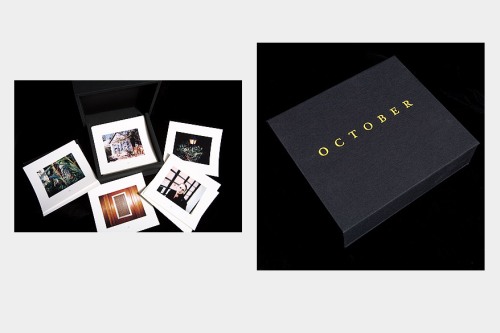
There aren’t that many places that really use the types of images I make personally. A small handful of elite magazines in specific stories, well, I showed my personal work to many of these over the years and if I waited for everything to overlap and be a perfect mesh or these places to hire me, I couldn’t be a professional photographer.
There is a PE out there who is great at hiring a certain type of photographer for a contradicting subject. Sometimes that is really great, for that PE and for that magazine. Say that PE hires a war photographer to shoot a wedding. Great, interesting, but to whom? Would the bride have paid to see her one big day shot that way? Maybe, but even if she sees the value in this, its likely not what the bride paid for. It’s a silly example, but maybe it helps explain my point. For me, it’s right shoot for the right client.
Say I love some book by someone really gifted. This book they made for themselves changed my life and the way I see. This is a wonderful thing. Yet, I then see this person go shoot an assignment and I see them mimic this, force it, fall back on a technique or formula or type of shot they are known for. I then don’t look back on their book the same. I see them shooting patterns of themselves for money. Sometimes this mesh of job and who they are fits and its sadly very rare and I think many times, photographers tell this to each other in bars in the dark, but heaven forbid out loud or written down. This to me has always been a dilemma and for the most part, I have enjoyed how different assignments have looked from my personal work until that spark of overlap hits again.
POP: Both the domain/title (“I Like to Tell Stories” ) and navigation of your website prioritize your personal work. What is behind this decision?
I think ones personal work is the most exciting and or interesting thing someone can witness. If one wants to see my assignments they are just one easy click away. I don’t want to be defined by my assignments even if or when I am proud of them. The combination of my all I believe or hope is much more fascinating.
I think people try too hard, make it all work work work. Look at me on this site, this site and this site, look at this last job I did, look at 20 outtakes spread out over a month, four months later. I lose interest pretty quickly when it starts to feel forced. It feels as times get harder people are getting more desperate or shouting too loud. Regardless of my assignment load or social circles, I want to make, and see, exciting work. And I really fear someone looking at my site and seeing some of the things I just described so I go out of my way not to do that.
One site, one place, this is me.
POP: Your book, btk, was inspired by a project you were hired to shoot for the ABA Journal on the Wichita, Kansas serial killer Dennis Lynn Radar. You write in the book that you were hired to shoot the DA, the Task Force Lieutenant and the houses of his victims, but that once you were back in New York, you felt compelled to document Radar and the victims themselves as well. It feels like you completed the story by doing this. What was your experience with this project and why did you feel like you needed to continue the project?
This is a perfect example of the happenstance I mentioned earlier. I had literally been back from Kansas about five minutes, struggling with my gear in the doorway when my phone rang. A friend who knew what I was up to called and asked if I was still in Kansas. I said no I just got in, why? He told me to turn my TV on, as a documentary on BTK had just started. I turned it on and there was Radar’s face, in my apartment, I had just been in front of his home and now he was in mine. At around this moment my father called too, telling me to turn on my television. I got my camera out and just started photographing the screen. I saw the houses I had just photographed and Radar’s face from his court appearance, but more disturbingly, the faces of the victims. I had only seen very small reproductions before but now here they were, their faces lighting up and glowing inside my home when I had just photographed their homes, the places they were killed. It was the very thing I couldn’t photograph in Kansas.
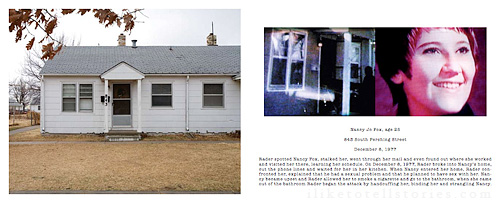
The assignment had been really hard and it was exactly why I had agreed to it. The budget wasn’t much but I made it work and knew when I got the call I would regret letting my worry about it stop me. The more an assignment call worries me the more eager I usually am to do it. The forethought and happenstance of why a PE chose me, called me, put me on a particular assignment is something I really treasure. I want it to change me, I want my experiences or photographs to make me a different person than I was before. This was unique as it was an assignment. I was telling the story of the men who helped, contributed, to putting an end to this man’s abuses. I wasn’t a thrill seeker or off on my own for some personal experience. It was an assignment first for a greater goal than myself that then became personal. Sometimes it’s a hard compass to follow but it’s how I have slowly learned who I am.
POP: Do you still shoot film for your personal projects?
I have been shooting almost exclusively digital since fall of 2005. I still have thousands of rolls of film to scan and sort—I am overwhelmed by myself. Not just with that but with digital too. I have about 7-8 books I need to sit down and make. I just don’t have time. Ideally, I would just work all day everyday for myself, taking the jobs as they come for fun or the challenge. I have one project barely started or dealt with that alone is 13,000+ photographs.
POP: With both your personal work and your portraits, you push past the comfortable to an unexpected place. With your portraits, you said that this sometimes has to be explained to your subjects because it can be uncomfortable. With your personal work, it is the point where the documentary becomes poetic and profound. It must be an interesting moment when you are photographing someone and for you the most comfortable or familiar place is in this deepening and they are being asked to go there with you to the unfamiliar. Are there times when you pull back from this?
The only time I have consciously pulled back is with children. Children are so wonderful and many times the play or rough housing or goofy I do that has them laughing away and playing back with the camera can be too easily misunderstood or not look like the something’s I hope to find. I don’t have my own children so when I photograph them I try to be sure the parents are familiar with me and the things I make and the ways I make them or I just don’t photograph them in the first place. While they aren’t my children in any of my photographs, while I photograph them, for me and my world, they are and I try to protect them as such.

Not My Daughter
All other times, it’s that discomfort or metaphor in awkward I embrace or seek out, as that for me is the moment I find beautiful in trying to understand someone in what I would like to believe is a real connection. Even if in the end, it’s only a real connection I felt. For me, it was as real as real can be, even if only that moment of a fractured second.
POP: What was the concept behind your Visitor series?
The visitor series is just that, people that visited my apartment I had in NYC, #1RN. It was small, old and cramped and bursting with photographs and boxes of them. I arranged a small space in which to photograph people, so whenever someone came by, I would take their portrait. No matter the who or the why, if they were in this space, they knew me well enough to know that I would want their picture. It started as Polaroid at first and then for a brief moment is was an antique camera in the back courtyard. But it eventually became people inside, on black, let me see you. There is someone in that group that is a one frame shoot. There is someone in there that is thousands. I see people so rarely, it became really special to me that someone would come by. I haven’t counted them yet, I think there are about 80 in the 13 years I was there. This amazes me as each one felt so special.
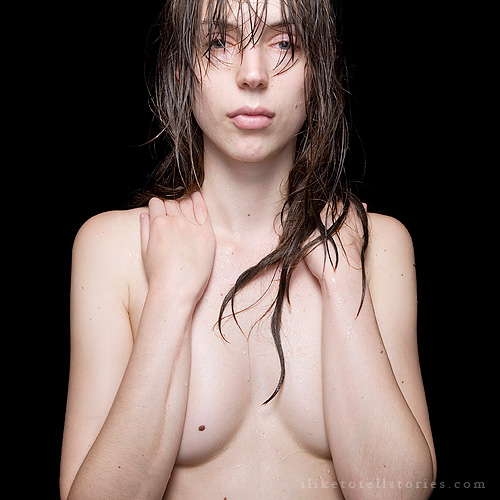
POP: For a recent personal story, you photographed Roswell. Can you talk about this project? Rather than photograph in the expected way, you chose to photograph the sun as a way of imaging the feeling behind our fascination with these places.
Roswell was only supposed to be a quick stop. I don’t have much connection to it other than a small fascination with the myths surrounding it and how the name almost has a mystical quality. I drove the small downtown, saw the small shops and almost didn’t stop. I am making a small series of images with my phone for someone as a gift, or joke, so I stopped to make one small image.
Then seeing how depressing these older gift shops were banking on the alien folklore, I wanted to get away and walked one block east. There was a small alley that had a few blocks of older telephone overhead wire structures. When I get lonely or wish I could hear from someone I miss, I tend to photograph phones, phone poles, wires, etc. So that was part of it but so was the desire to want to hear from someone, something, far away, in physical space or mental space. So I shot the sun peeking through poles as the sun is the only star I could see during the day. Then I also photographed the clouds around Roswell. Looking up, looking up into the sky with a desire to see something, not knowing exactly what. That hope, that desire, that longing, that longing to me is what the myth of Roswell is. The clouds were than placed on the sun/poles photographs later, almost randomly. Look up, look up with longing, what does that feel like, what does that look like?
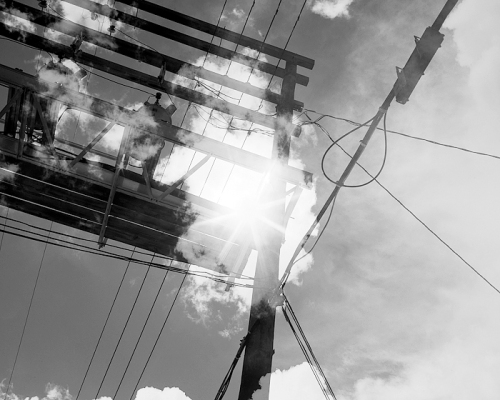
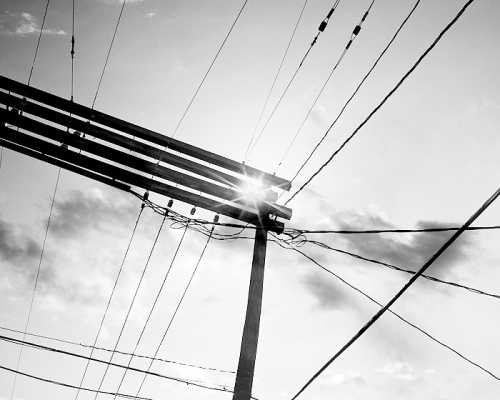
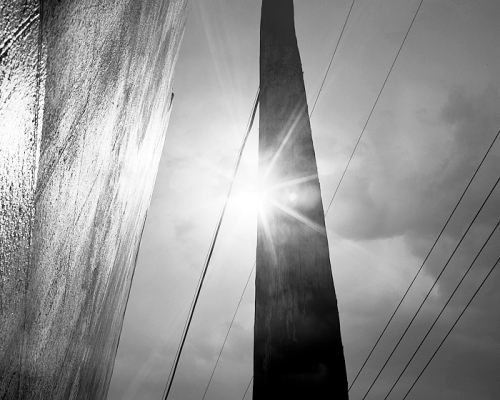
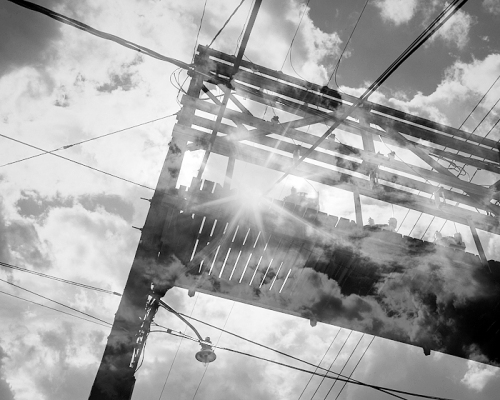
What I Saw Up There, Here
I WANT TO BELIEVE
I started sandwiching images long ago for a very specific reason and person, but since then, they have become much more akin to Frederick Sommer’s methods. Using multiple enlargers and several negatives to make a single print. Not multiple exposures of random calculated happenstance, but thought out, specific plans of action to make an image, specifically. This process always fascinated me. So while I don’t retouch or use software any more than a traditional darkroom worker would, it does lend itself to a wonderfulness these new technologies now offer that never existed before as easily.
POP: A perfect day when not shooting?
Well, making things is what I enjoy most. So I would have to say a car full of different types of forever machines, an open road in front of me, some music on too loud, the windows down and someone I love within arms reach, or touch, going someplace new, or new to me.
A couple I once knew were lying on a couch together under a window, quietly being affectionate with each other, I was photographing them. The man was sleeping with his head in her lap as she was caressing him. She looked up at me, I knew her less than I knew him, but she softly said, “I’ve never seen you as happy as when you’re doing that.”
Filed under: advertising photographer interview, editorial photographer interview, portrait photographer interview, Uncategorized | 6 Comments
Tags: editorial photographer, editorial portrait photographer, jonathan saunders photographer, time magazine photographer
Diane Eames is the founder of a creative consultancy that provides specialized marketing services to photographers. We spoke earlier this year about the evolving need to include relationship building in the marketing mix through more targeted programs. She recently worked with Michael Winokur on a very fun and smart targeted promotion that was perfect for SNAPS.
Diane was hired by Winokur to help generate awareness for the ‘Animal’ category on his site among Bay Area art buyers through the promotion of photography recently shot featuring “Lemondrop,” a Burmese albino python on special exhibit at The Academy of Sciences SF.
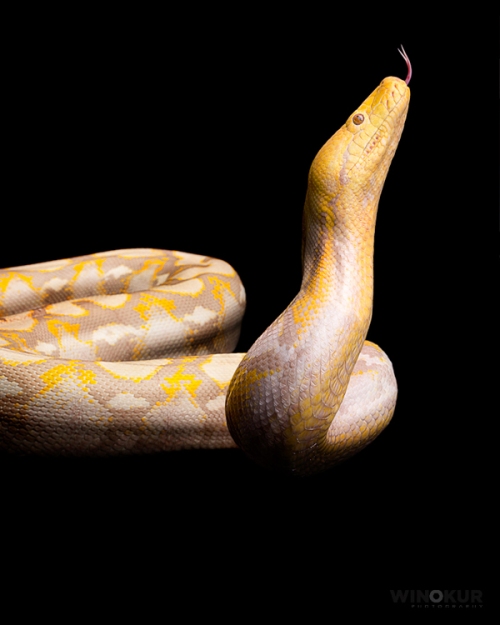
POP: How did the concept evolve?
The Academy of Sciences had used several images that Michael shot for gift-store merchandise. It was the beginning of August and the exhibition was closing after Labor Day. So at this point, we had a goal for timing, artwork and something to gift this targeted set of contacts. Beyond that, Michael had shot behind the scenes footage of the Lemondrop shoot and had a great film clip.
With all that to offer, I started to think that we could create a “countdown to Lemondrop” tool that we could repeatedly post. We didn’t actually need to get people to the Academy of Sciences because we were bringing them the best of it in our promotion – gift store swag, unparalleled photography and film footage of Lemondrop that a museum attendee wouldn’t be able to capture.
The next step was to figure out what we could offer that would make it more about Michael Winokur Photography…that’s when the idea of customizing the gift package started to take shape. We decided to develop a targeted promotion that would involve a custom package, hand-delivered to a targeted advertising and editorial list that would also have a social media component.
We selected a kraft box that would snuggly contain the merchandise and then began to personalize the piece. One of the gift-store treats was a reusable plastic summer drink cup (with lid and straw). I don’t like to send an empty cup, so we needed something to go inside. I found a recipe from a local SF bartender for a Lemondrop cocktail that called for smashed lemondrop pieces (lemon drop candies were another one of the merchandise gifts) and prepared a traditional looking recipe card in courier type to slip next to the cup. We added a customized business card with a shot of Lemondrop the snake plus two 5” x 7” cards with various shots of Lemondrop + an inset image of another one of his animal portraits, a bunny that fittingly has a worried look on its face.
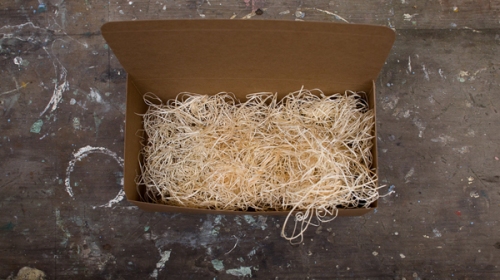

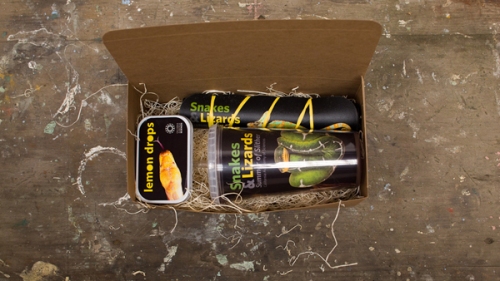
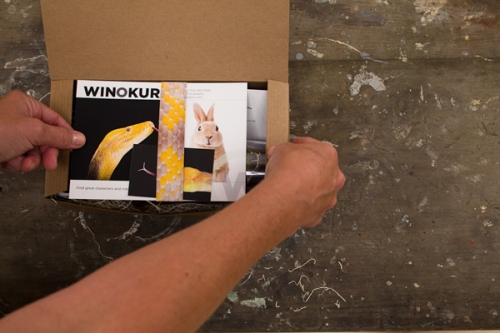
The point of using the inset shot of another animal was to loosen up the theme and remind people that he has shot many more animals and the call to action was to see all the people and animals he has on his website.
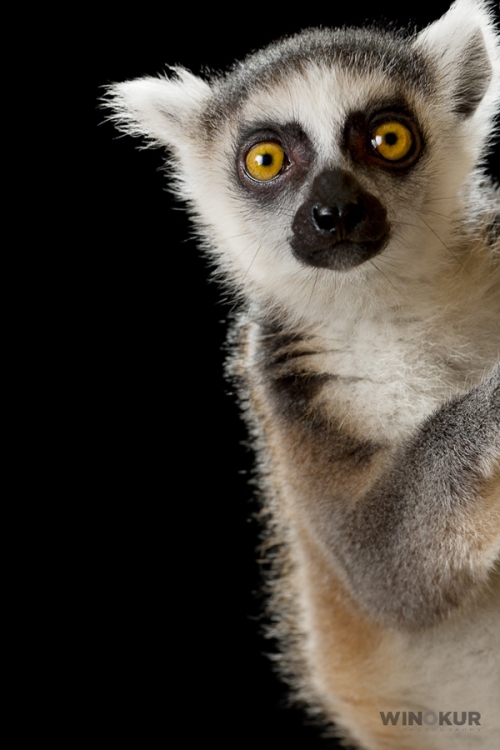

In order to further personalize the piece and create a catalyst for follow-up, a handwritten note on Winokur Photography stationary invited people to enjoy the gifts and to invite them to call anytime they have a project appropriate for Michael and/or if they wanted to see a portfolio.
We focused on the outside of the package being fun and inviting, while high-quality enough to support the contents and dutifully represent Michael’s portraiture aesthetic. Michael created a custom snake sticker wrap for the box by compositing a repeat sample of Lemondrop’s skin plus a head and tail. Small-type rubber stamps were used to write “squeeze me” on the outside of the box, along with a gift tag with Michael Winokur Photography logo artwork.
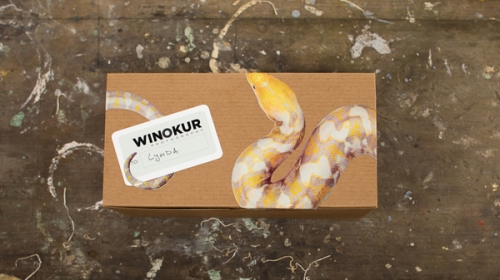

POP: What response did this generate? Can you share any with us?
Sure! We had a great response from our recipients plus Michael was really pleased that he has a conversation to build on with potential clients. Here are just a few:
“Michael, what a lovely package of goodies you made. Thanks so much. It sounds like youre having a lot of fun with the zoo. We won’t forget you. Thanks for thinking of us.”
“Thanks. That was a cute promotion and raised quite a fuss here. I’ll keep you in mind.”
“I loved the care package and your snake shots were fabulous! Hope we get the opportunity to shoot some animals in the future, because I would love to work with you.”
“LOVED lemondrop, and have the snakeskin on my office wall. Shared the ingredients with the “kids” here. Thanks so much!!”
Thanks to Diane and Michael for sharing with POP.
Filed under: Marketing Consultant Interview | 1 Comment
Tags: animal photography, Diane Eames, Michael Winokur, photography marketing consulting
Matthew Turley is an advertising and editorial photographer based in Salt Lake City, Utah and represented by Bay Area agency Marianne Campbell Associates. In the six years he has been shooting professionally, he has built an advertising and editorial client list that includes The Home Depot, RAM Trucks, IHG, and Bollé, as well as Men’s Journal, Outside, SKI, Bicycling, Entrepreneur, and Discovery Channel Magazine. I’m learning that there are no coincidences, especially when it comes to how I find the next person to interview.
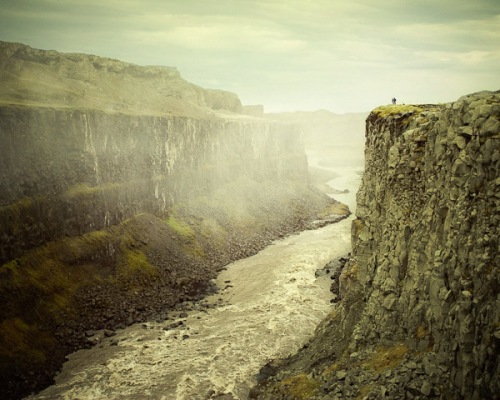
At the time I contacted Matthew, I was training to climb Mt. Whitney. I’m not generally an outdoors person and the weekly training hikes took me to an experience to which I had not given much thought—that by getting out of my car and heading out onto trails and up mountains, I could visit places to which I wouldn’t otherwise have access. And, aside from the memories, this simple act of discovery was the experience and it was finding its way into my daily life which started to feel like as much of an adventure as climbing a 14,600 foot peak. At the heart of this though was the awareness that the Earth was vast and that in my time I would be privileged if I only saw a small part of it.
When I saw Matthew Turley’s work, I recognized something akin to this in his images of the mountains, of which there are many. And when I spoke with him, I learned he was also planning a Mt. Whitney ascent, albeit up the much more demanding climbing route after a 150-mile bike ride. But back to his photography. I also recognized a love for the medium—he often shoots with vintage cameras and lenses—and despite having twenty+ portfolios of work on his site, has an unmistakable visual and conceptual vernacular whether he’s shooting at the top of a mountain, the fjords of Norway or in a pool hall in rural Nevada. His images hold power and acquiescence in balance, a confidence born of knowing one’s right place. They have wisdom and I sensed a depth and deep intent.
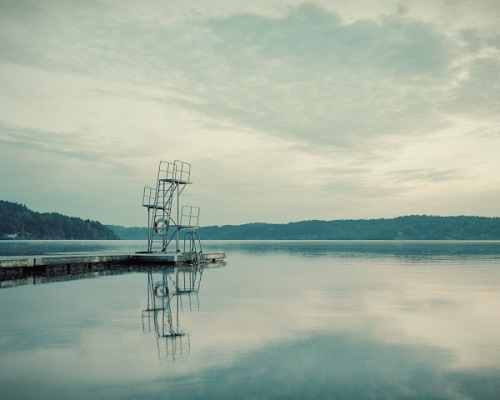
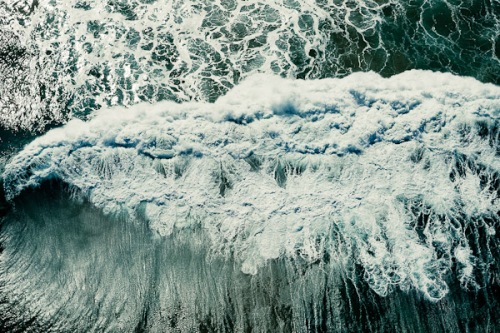
I had interviewed Andy Anderson just a few months prior and didn’t realize Matthew Turley had worked for Andy as his assistant and retoucher. I saw some of his influence, but I was interested in the point of departure, the quiet humility and a relationship to vast spaces and our relationship to them (and man’s place in them) that traces its way through his outdoor lifestyle and travel images and also finds its way into his portrait and lifestyle ad work. And how he is able to bring the experience he has at the top of a mountain peak down onto the pages of adventure magazines and into the world of advertising. And where in a Home Depot ad, this same humility and sense of man’s place in the world is transformed into light, expression and gesture.
In the introduction to his portfolio Man and Mountains, he writes “I am fascinated by our terrifyingly vulnerability and relative insignificance as we travel afoot within a brooding natural world.” When I spoke with Matthew, he was deeply thoughtful and kind and at turns serious and funny. A true craftsman, he brought a level of care and respect to the interview that one would need to slowly make their way up a sheer cliff at 14,000 feet or to capture ten shots of the last space shuttle launch on a 4×5 to how he answered every question.
This was one of those interviews that could have lasted for months. I still have questions for him. It was such a pleasure to meet him and get to know his work. And like so many of the best photographers, he shoots what he loves and beauty, inspiration and a little magic are the result.

POP: What is your background and how did you come to photography?
I went to Brigham Young University, initially as a pre-med student for three years studying physics and astronomy. I finished with a BFA in photography and a minor in chemistry. College was hell because everything around me was so fascinating. It took me almost seven years to get one degree—not so much because I was messing around but because I kept taking classes for fun—geology, astronomy, humanities, side classes. The library was the worst place to study because it was full of interesting books. Whether it’s more of a strength or weakness, that same quality follows me today. I’m constantly distracted by things and I like to think it keeps me well-rounded. I love learning new things and mixing it all together.
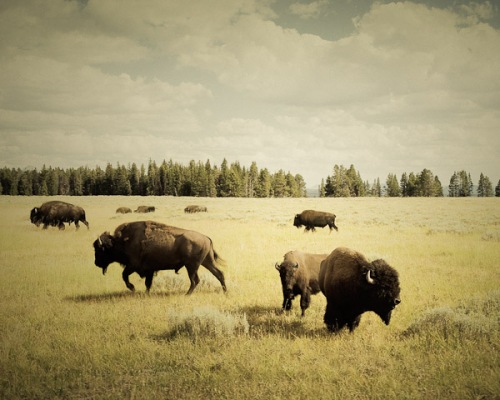
POP: After college you moved to New York. What were you shooting when you were in New York? Was this a time when you were trying out different styles? How did you narrow down your understanding of who you are and how you wanted this to come through in your work?
Well, actually after college I ended up working for Andy Anderson in Idaho for a while, which was where my real photo education took place. It was after leaving Andy that I ended up following a girl to New York and getting married. Honestly, I had no business living in Manhattan. It just wasn’t me. I had gone from living in an isolated cabin in the mountains to a noisy apartment in Spanish Harlem. Unfortunately, our marriage didn’t work out very well either and I found myself back in Utah less than two years later. That said, I totally appreciate the time I spent in New York. It was there that I really got my business underway—I had my portfolios made, developed my website, and developed some great client relationships.
However, unlike a lot of people, I never felt a lot of pressure to live within a large market like New York. I believe you can be a commercial photographer in today’s world anywhere you have the internet, FedEx, and an airport—something I learned from Andy, who was living proof of the idea by being based out of a tiny town in Idaho. I figured I could continue building my relationships with clients in bigger markets like New York, Dallas, and Los Angeles while living the life I wanted from afar.

Continue reading ‘Q&A with Advertising & Editorial Photographer MATTHEW TURLEY’
Filed under: advertising photographer interview, editorial photographer interview | 3 Comments
Tags: advertising photographer interview, editorial photographer interview, matthew turley
POP at Apple
I have several interviews coming up in the next few weeks starting with photographer Matthew Turley followed by Caterina Bernardi and Peter Rad. In the meantime, I thought I’d share a summary from a very fun talk I was asked to give at the SF Apple Store as part of the APA Creative Speaker Series. APA board member and photographer Christian Peacock turned the tables on me and asked me a series of questions (some I’d prepared for and some not) about POP and to share what I’ve learned from from all the interviewees. It was very fun to talk about POP, to show so much work from all the photographers, stylists and reps that I’ve gotten to know and featured on POP. And especially to be interviewed by Christian who was his usual open and charming self and really pushed me to think more deeply about what POP is all about.
People sometimes tell me that the interview process helps them refine their ‘mission.’ Christian asked me quite a few questions about why I founded POP and the guiding philosophy behind how I select interviewees which I found very helpful to clarify. I’ve included that up front, but the I think the heart of the interview is further in where I simply share what I’ve learned over the course of the last year and a half of publishing POP.
Thank you to the San Francisco APA and to Christian for the great questions and the opportunity. This is a starting point and by no means an exhaustive conversation on these subjects and I welcome any comments and additional feedback.
CP: What led you to start POP?
I was consulting with photographers on their marketing and saw that personal work and a point of view were playing a larger role in getting hired. I really enjoyed the process of finding what was unique about each photographer (or stylist or rep) and what inspired their work. I initially launched the blog to feature assignments and give credit to all involved and found myself naturally starting to interview people.
CP: How have your past experiences helped you with your blog?
I studied fine art photography in college and some graduate school and then worked at a photo gallery, for a rep, at a museum and art book publisher before deciding to get serious about my career. I studied marketing and ended up at Future US, a web and print publisher, where I worked for nearly ten years on brand and corporate marketing.
I art directed a lot of marketing collateral and photo shoots and also managed some on-set PR for some of our celebrity editorial shoots. So I had an understanding of the commercial and editorial photo markets and a grounding in conceptual fine art photography.
And honestly I was always a bit envious of the editorial teams and frequently pitched product ideas to management and worked on a lot of launches. Marketing was very creative and fun for many years, but at some point it wasn’t. Budgets disappeared and we were left with PowerPoint as our primary marketing tool. I missed having a creative job.
POP was a creative outlet for me and allowed me to resurrect my love of photography in a new format. I have no experience interviewing people, but love people and their stories and this is really what drives this. I’m also kind of continually baffled by things and therefore always have a lot of questions. I also
And while it’s essentially an editorial product, I can’t not be a marketer. I’m always looking for what is unique in my subjects and trying to formulate questions which allow them to talk about this. My goal is to interview people who are interesting or groundbreaking in one way or another and to bring this out and look at it from many angles in the interview process. I think this might be the right use of marketing in a way. Just highlighting what is unique about someone or something.
Filed under: Uncategorized | 1 Comment
Tags: APA Creative Speaker Series, Apple Store Speaker Series
Dana Neibert is an advertising photographer based in Coronado, California, just outside of San Diego. A campaign he shot for Chevy Trucks was featured on POP in an interview with Peggi Jeung many months ago and I’ve been waiting for a break in the schedule to reach out to him. Luckily, he had some time between jobs and was interested in being interviewed—word hadn’t made it to San Diego that I sometimes come back three and four times with clarifications, more questions and requests for more images and he said ‘yes’ right away.
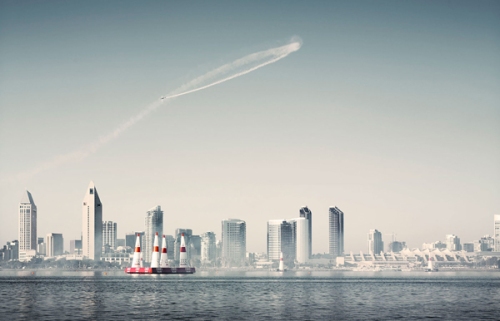
Photo by Dana Neibert
Trained at California College of the Arts as a graphic designer, Dana spent many years working as an agency art director before transitioning to commercial photography, where he expands on his award-winning graphic sensibility to produce his instantly recognizable lifestyle, landscape, travel, automotive and conceptual images for an international client list that includes American Express, Four Seasons, Lexus, GM, AT&T, Eli Lilly, Frito Lay, Johnson & Johnson and Intel among others. I often try to get to the heart of what informs a photographer’s work. With Dana Neibert, it came back over and over to his love of image making which is evident in his precise and expressive compositions and color choices, and the ease and beauty he captures in his portraits and lifestyle shots.
I spoke with Dana about how a chance shoot with Andy Anderson convinced him to make the move from art director to photographer, launching a successful commercial career from Coronado, the evolution of his portfolio and the important role that personal work plays in both growing his vision and in landing commercial work. Thank you very much to Dana for all his time on the interview and for treating my repeated requests as if they were coming from a valued client—each was met with a ‘yes’ followed by a quick response. And on top of it all, he is extremely nice and makes beautiful images, which again I had trouble editing down. Enjoy!
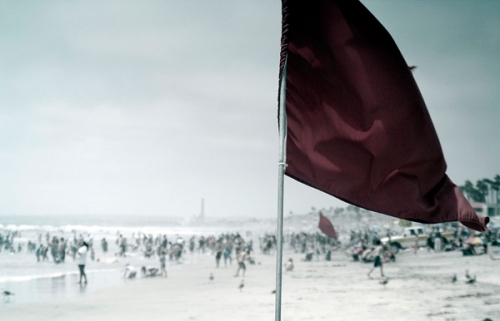
Photo by Dana Neibert
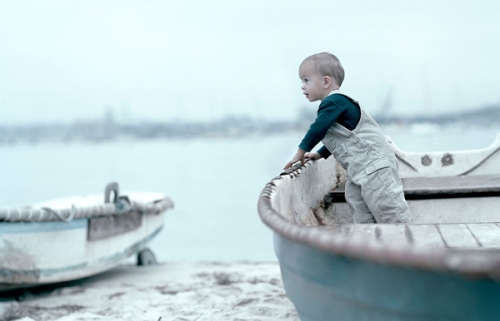
Photo by Dana Neibert
POP: You were a trained graphic artist and an agency art director before making the move to commercial photography. How did you make the transition? Had you always been interested in photography?
The transition from art director to photographer was a gradual one. I worked for several small agencies who naturally had small clients and a lot of times hiring a photographer was not in the budget. You either used stock or shot it yourself. Over time I created more and more images and started putting a portfolio together. When I left art directing, I’d been working on my portfolio for about five years. I’m almost entirely self-taught except for one black and white darkroom class I took. Basic black and white printing helps you understand fundamental Photoshop tasks because the basic tools in Photoshop are what you would find in the darkroom.
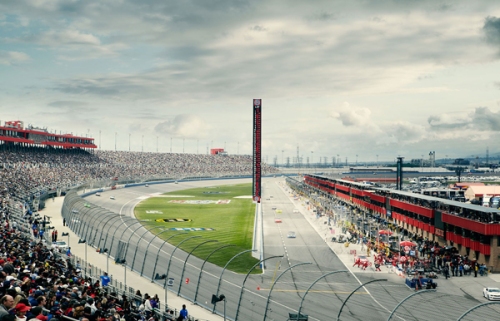
Photo by Dana Neibert
Continue reading ‘Q&A with Advertising Photographer DANA NEIBERT’
Filed under: advertising photographer interview | 1 Comment
Tags: dana neibert, fox creative
Founded in 2005 by Maren Levinson, a previous photo editor at Dwell, Redeye Represents is an LA based agency with a unique vision and an exclusive roster of photographers and illustrators who are both successful, well-known and established fine art and commercial artists. In the six years since launch, Maren has built a boutique agency with a list of artists that includes Corey Arnold, Meiko Arquillos, JUCO, Noah Kalina, illustrator Amy Martin, Zen Sekizawa and Noah Webb.
Known for bringing a strong point of view and a deeply engaged and fresh approach to their work, Redeye’s artists shoot for a client list that includes editorial brands Vanity Fair, Travel + Leisure, Esquire, ESPN, Time, Newsweek, Monocle, Dwell, GOOD, Fast Company, Flaunt, Black Book, Paper, Complex and Maxim and commercial clients Target, Nike, Steelcase, Best Buy, Capital One, GE, Columbia Outdoor, VH1, Arrowhead Water, Memorex, Converse, Adobe, HP, and Jet Blue.
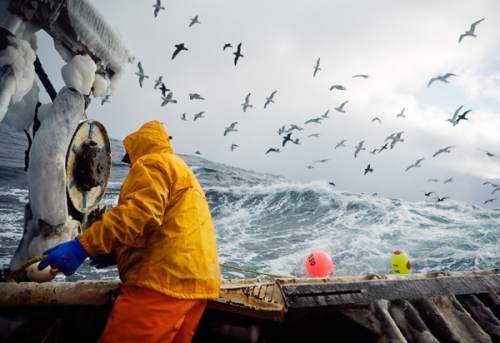
Photo by Corey Arnold
I was interested to know what an artist with a fine art perspective uniquely brings to commercial projects, what it takes for an artist to straddle the two worlds and be successful in both, and of course to feature the work of her artists on POP.
Thank you to Maren for the thoughtfulness brought to her interview and for sharing her unique perspective and insights with us and so much of the amazing work of the artists she represents.

Photo by JUCO
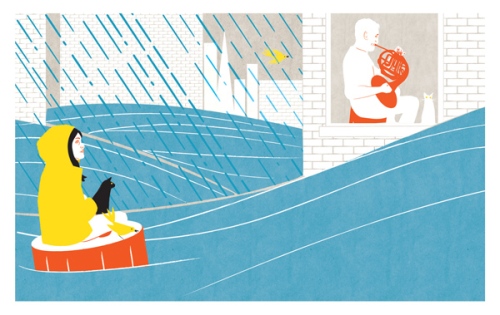
Illustration by Amy Martin
POP: When you left Dwell, how did you make your way to being a photo rep?
I tried almost everything the world of photography had to offer for a bit. I interned at a gallery, I freelanced as an art buyer. I wanted to see where I might fit best in the one arena I knew and loved. Redeye was actually supposed to be a gallery at the beginning—one for international, contemporary photography. My cousin, Katie Baum, and I were going to start it together and she actually came up with the name. At the same time we took a small business course to give our gallery idea some shape, and we found out it was a pretty horrible way to support two adults in San Francisco! She became a fine art photographer and I eventually turned Redeye into an agency.
I was still in touch with the photographers I had hired at the various magazines where I worked, and I would suggest places for them to visit when they went to New York, which editors they should meet, etc. And they were getting jobs, while I still didn’t have one. Few photographers seemed happy with their options for agents. Noah Webb and Olivier Laude were instrumental in urging me to really commit to this agency idea and had great confidence in me from the get go which I am still grateful for. I was worried, because I’m not a natural sales person, but I realized it’s not about sales if you believe in what you are talking about. This is one of the reasons why I have to be so selective in regards to who I choose to represent. I am a naturally enthusiastic person, so if I can work with artists I respect, repping them is as natural as recommending a restaurant I sincerely love to a good friend (which I do often).
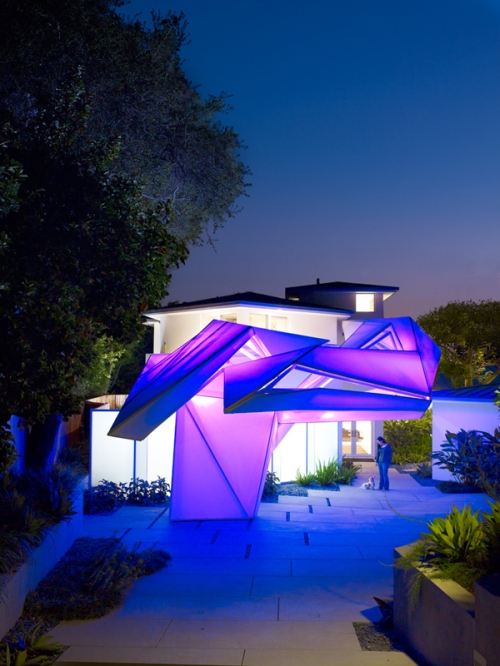
Photo by Noah Webb
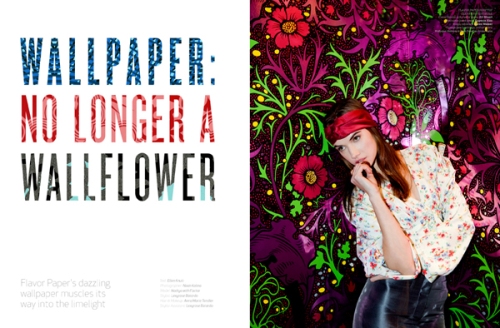
Photo by Noah Kalina
POP: When did you launch Redeye?
Redeye began in San Francisco in 2005. As an editor, I had loved the work and rosters of Deborah Schwartz in Los Angeles and Julian Richards in New York. They were my go-to agencies for interesting and humorous work. I felt that San Francisco needed an agency in this vein, and both Deb and Julian were very supportive of me from the beginning. I eventually moved to Los Angeles by a twist of fate, but I never would have started the agency unless I felt there was this marked need in San Francisco.
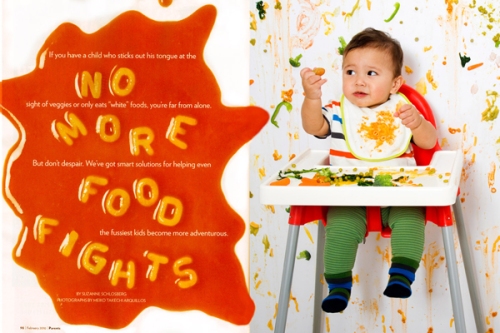
Photo by Meiko Arquillos
POP: What was/is your philosophy for building your roster and what do you look for in the artists you take on?
There’s an alchemy to developing a roster. And what I consider now are not necessarily the same things I considered at the beginning. First and foremost, I need to respond to the work and think it’s terrific, but that is a basic assumption. What I consider more now is what I think the artists ability is to maintain current, to constantly produce and reinvent and engage in the creative community. There is a definite x-factor that agents can get a sense for. Does this person take pleasure in what they do? Will they continue to do it with the ebb and flow of the market? How do people respond to them? How do I respond to them?

Photo by Noah Kalina
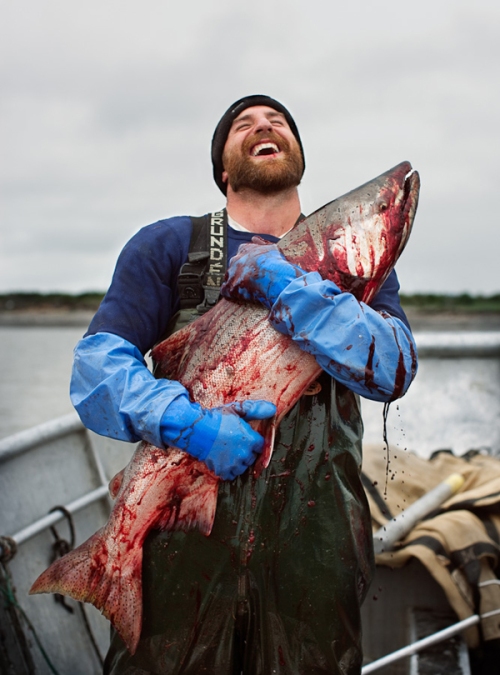
Photo by Corey Arnold
For me, I also have to like my artists as people. I talk to each of them almost every day. If we don’t like working with each other or don’t get each other’s humor, then our jobs are no fun. I truly admire each and every person on my roster. Noah Kalina has a sharp sense of humor and makes brilliant personal work. Julia and Cody (Julia Galdo and Cody Cloud are team JUCO) crack me up constantly and have an infectious enthusiasm. Corey is just plain joyful, smart, and skilled at what he does. I know that if this is my experience of my artists, then my clients will have the same experience. Everyone’s jobs are stressful, so we need to find a way for the process to be fun or why do it? And I need to believe we are making something worth producing, or I would not be able to spend the bulk of my time in this way.
My aim is always for a long-term relationship with my artists. I am looking for people who won’t let short term frustrations affect long-term relationships. I always tell people that an artist/rep relationship is like a marriage, so you have to choose to work with people you trust and respect. I know my most successful artists would be successful without me. I have no delusions that I am the key to anyone’s success. But I do believe that they choose to work with me because we have a chemistry and mutual trust and respect. Communication needs to be fairly easy and effortless. We have to speak the same language and be generous and graceful when a situation requires it.
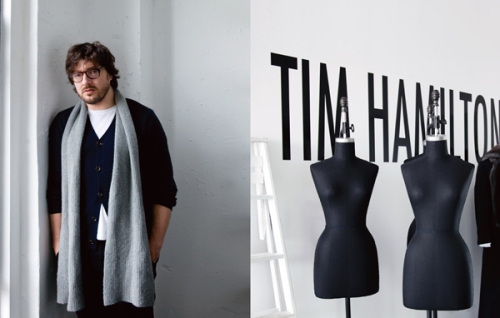
Photo by Zen Sekizawa
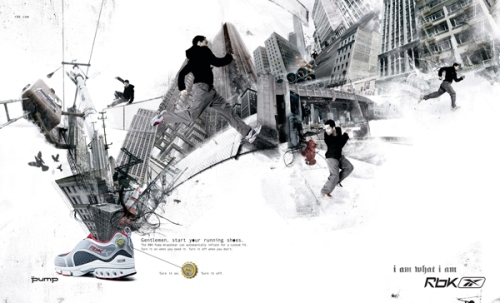
Photo by Zen Sekizawa
This information tends to be difficult to gather upon first meeting, so there is a bit of a wooing process with most artists where I get to know them, I follow their careers a little bit, we talk, maybe we’ll even work on a few projects together before committing to each other. I don’t sleep with anyone on the first date! We just signed Zen Sekizawa, and she recently reminded me that it has been a year since we first started talking.
POP: All your photographers are also fine art photographers. Are they fine artists first?
I am pretty simplistic in how I define artists. They need to be making work. Good artists make work that makes people see things differently. I am not interested in representing anyone without a voice and a vision. What excites me about good work is when it is fresh and I don’t feel like I have seen it a million times before. People look at Meiko Arquillos’ work and they constantly will say, it’s so “fresh.” No one sees things the way she does. It’s always a little off, a little skewed by her particular lens. I can’t wait to see what she comes up with after a shoot, because it’s never what I would expect or prescribe.

Photo by Meiko Arquillos

Photo by Meiko Arquillos
In the traditional sense, yes, I started the agency with the idea that there shouldn’t be this dirty line regarding fine artists doing commercial work. Most people forget that Diane Arbus was a commercial photographer as was Avedon, etc. I actually think some of the best photographers out there do both, and that strong personal work is what actually gets photographers hired commercially while commercial work sometimes leads to personal projects and certainly facilitates the making of that work in one way or another.

Photo by JUCO
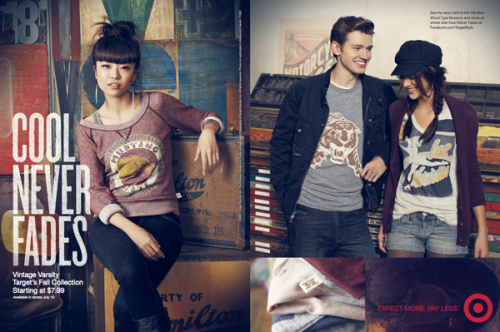
Photo by JUCO
Corey Arnold is known for his fishing work and gets hired for things fishing and sport related most often. The publicity his monograph got him attracted more commercial work, which brought him to places where he could make more personal work. Amy Martin did commissioned work for McSweeney’s and they eventually published her children’s book. The idea is that the work in that book will then attract further commercial clients, which will allow her to work on more books in the future.

Photo by Corey Arnold

Photo by Corey Arnold
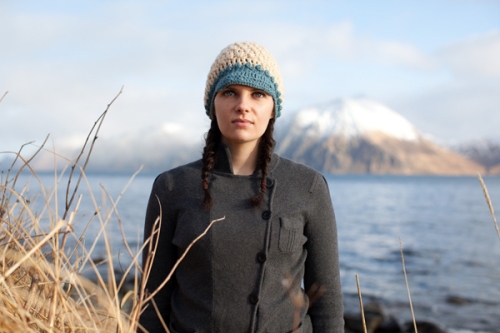
Photo by Corey Arnold
People want to know that they are working with someone who brings a point of view or perspective to what they do. Nowadays, almost everyone can make a pretty good picture with a Canon point and shoot (I can!). Unless you can bring something to the table that no one else can offer, you will get lost in the shuffle.
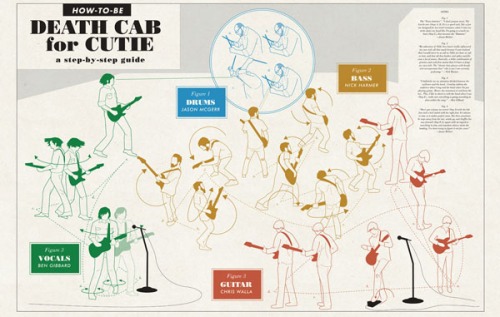
Illustration for McSweeney's by Amy Martin
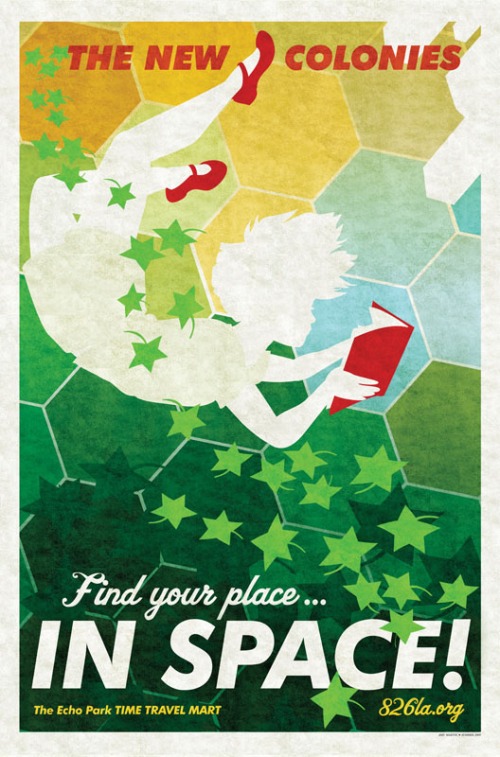
Illustration by Amy Martin

Illustration by Amy Martin
Now more than ever, an artist needs to have something distinct to say and that needs to come across on every page of their portfolios and website. When I edit work with an artist, I make them ask ‘is that an image only you can make?’ Even if it’s an oversimplification, you want people to be able to say, that’s the guy who _____ Or that’s the woman who does _____. Then it’s your prerogative to introduce new work that adds to or changes that sentence, but your message needs to be clear and your work consistent or you are diluting your message.
POP: What does it take to be able to do both fine art and commercial work?
Not everybody can do both. There are some commercial photographers who do amazingly skilled work but don’t feel the need to add anything further to the conversation. At the same time, there are some fine artists who do not like people and cannot collaborate at all, as their vision is so singular. It is a rare and amazing creature who can do both well; there’s definitely a tricky balance to strike.
Some of the skills can be antithetical to one another. A commercial artist has to be really good with people. They have to listen to various people’s comments and input and integrate all of that into what they to. Commercial work is creative work by committee. Being a fine artist is about being your own art director and client and trusting and sticking to your vision. I truly admire my artists who can reconcile these two impulses and let these proclivities play off of each other.
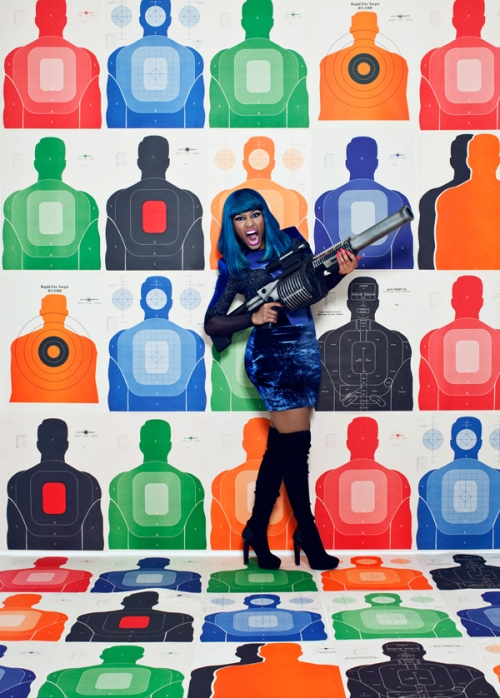
Photo by JUCO

Photo by Zen Sekizawa
Commercial artists need to be able to make complicated things easy. They need to be able to delegate. On a commercial shoot, a good photographer is almost a director. It’s a big job. With editorial work, it can be more simple, as there are not large crews and art directors and clients on set, so there are some editorial photographers and fine art photographers who do not make sense as advertising photographers. Some people are not meant to host 15 people on set and be able to deftly navigate large corporations.
At a certain point, an artist needs to ask themselves what they should be doing. There’s no point in swimming upstream. They need to recognize their skills and desires and read what those signs are telling them to be. If you don’t like traveling, commercial photography is going to be an endlessly frustrating life for you with all the last-minute bookings. If you get stymied by group decision-making, deadlines, and evolving briefs, you need to recognize that about yourself and identify what area of your field gets the best work out of you.

Photo by Noah Webb
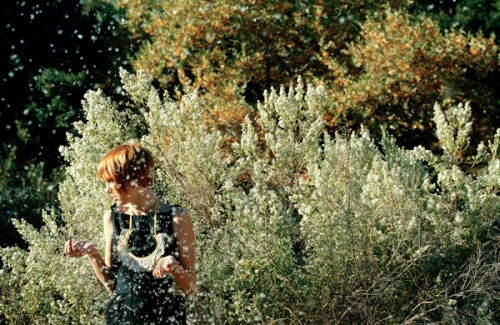
Photo by Zen Sekizawa
POP: How do your artists balance both fine art and commercial?
When the photographers are doing really well commercially, it’s exciting and it’s fun. You go through peaks and valleys. Corey is happy to turn down work when he is in Alaska fishing and I am happy for him to do so. What he does and makes during this time is what makes him who he is. Sometimes an artist will come to me and say they need time to rejuvenate and get back to what inspires them. JUCO likes to make fashion pictures in the desert, and suddenly their portfolio is benefiting from dazzling new additions. I’m all for it.

Photo by JUCO
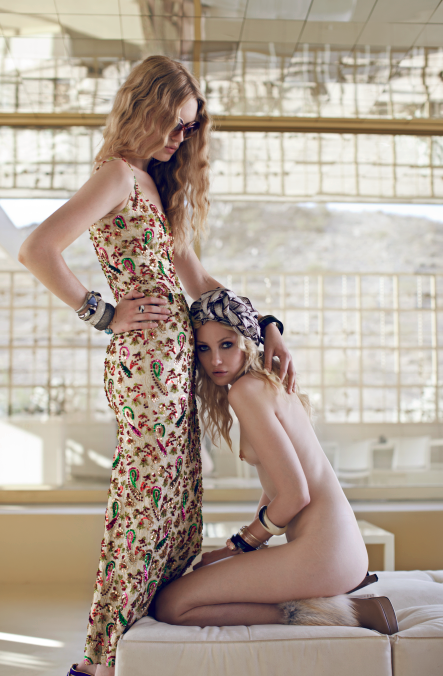
Photo by JUCO
Noah Webb made a feat of a music video because he wanted to exercise that muscle and build a reel. I’ve worked with him for years, and I was even amazed by the complexity of the work. I’m thrilled whenever my artists go off and add to their portfolios and to their body of work as a whole.
I was recently so proud of the videos Noah Kalina contributed to an art show. I had nothing to do with any of those personal projects, but they are all at the essence of who the artists are and why people want to collaborate with him.
POP: Fine artists work from the place of deep personal inspiration that the best commercial artists bring to their ad and editorial work. Do you find that your artists bring a deeper level of inspiration to their commercial work?
Absolutely. That is why I work with them, and I believe why people hire them. They are all smart, thoughtful and innovative people. The hope is that they will take a brief and raise it to the next level. JUCO makes mood boards and gathers inspiration for almost all of their projects/assignments. They work with a crew of stylists and hair and makeup artists they trust and present the whole creative package to their clients. They really think about what they do and never merely execute. Meiko actually draws things out and sketches her photographs before making them. Corey is always trying to bring the authenticity of his artwork to his commercial jobs. Noah Webb thinks a great deal about location and compositional considerations beforehand. Amy Martin is a conceptual thinker and brings that to the table with everything she does. I could go on and on…
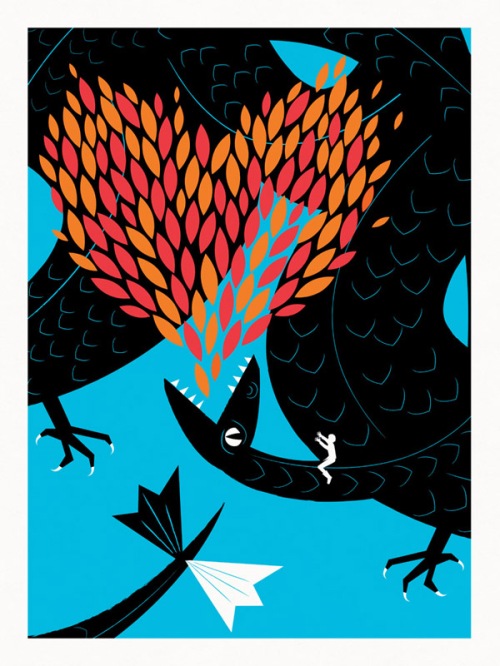
Illustration by Amy Martin

Photo by Noah Webb
POP: What changed when you moved to LA?
I couldn’t have loved San Francisco any more, but when I moved to LA I did notice I was more connected to the rest of the world in a very seamless way. People are always passing through and there’s an easy exchange between New York and LA. People hire my artists from LA and Portland to work in the Bay Area all the time. I couldn’t understand that when I lived in San Francisco, but there’s such volume and choice available outside, and it’s very little expense to have access to a much larger pool of artists.
The funny thing is that many of my artists lived in San Francisco for good and formative stretches of time: Meiko, Corey, Noah Webb, Julia and Cody. We’re all SF refugees and we all greatly valued our time there. It’s such a nurturing and supportive place to cultivate your voice and grow as an artist. There are amazing teachers and schools there. The community is tight and inspiring. There’s no doubt I would not have started Redeye anywhere other than the Bay Area. But at some point I was looking for a larger market and to be closer to a bulk of my artists (and warmer weather, of course!).
The ironic thing is that while a good number of my artists were and are down here, few of our clients are. Most of our ad work is in SF or New York, actually. There are great groundbreaking agencies in the Bay Area, like Goodby and Butler Shine and Stern and exciting design firms like Tolleson and AKQA. But they don’t necessarily hire SF photographers all the time because there’s a lot of volume and choices elsewhere.
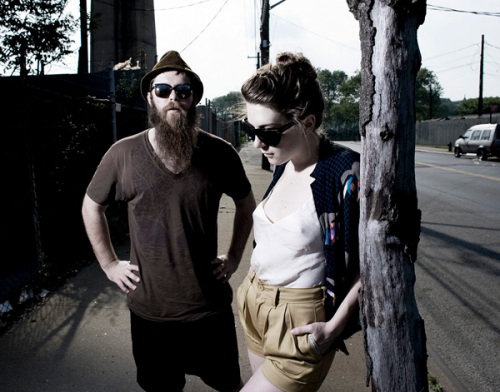
Photo by Noah Kalina
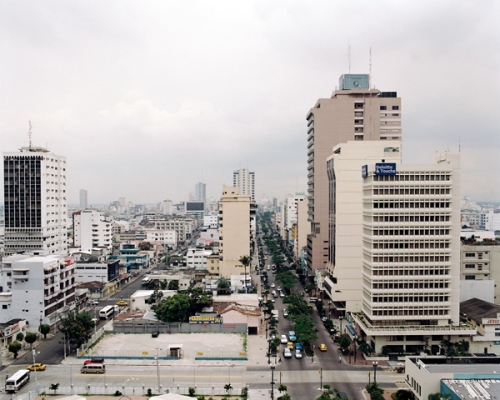
Photo by Noah Webb
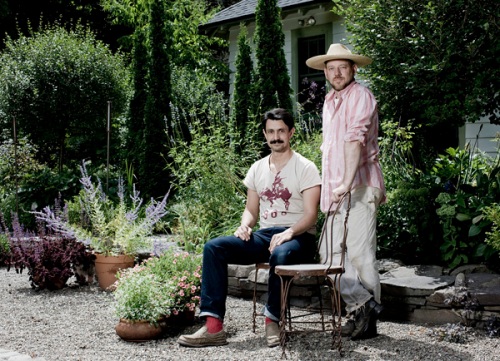
Photo by Noah Kalina
POP: How has having been a Photo Editor helped you as a rep?
I understand that people have tight budgets and that they really want to do something great with what they have and I try to help them with that. I understand how I liked to be approached and not by photographers and reps. I understand that it’s not personal when people don’t get back to you, that they have a lot on their plate, tons of meetings to attend, and crazy deadlines. I know and remember what promos were effective and what stood out and why. When we design promos, I tell my artists I received close to 60 a week and though it might be tempting to put a poetic, subdued image on the promo, it’s more important to find a way to jump out of a pile of 60, and you need to consider that every time you send something out the door. How will I rise above the noise? Often it’s by being personal and custom in what you make, how you address it and to whom you send it. Design and production quality are important. You are sending materials to visual people. You have to speak in a language they respect and understand.
POP: Your agency site is very well organized and easy to navigate with portfolios, tearsheets, website and bio.
I’ll actually be working on a redesign very soon, but yes, quick loadtime, not having too many categories, being able to easily find the most recognizable work of the artists are all things I consider. I’m converting my site from flash to HTML so it’s readable on iPads and iPhones as well, and I like it when you can drag and drop photos. It’s a constantly evolving learning process for me to be better and more accessible online. I learn from my artists and colleagues constantly.
In terms of editing the portfolios, I do keep in mind that people are in a rush, that they’ll click fast through the first 5 pictures and they won’t bother if those first five pictures don’t wow them.
I sometimes put the high energy work up front, as if you’re almost inviting the viewer to your virtual party. When people are having a good time looking at work, when you brighten their day, or make them laugh, it’s a good thing. If you answer the door tentatively or down, your guest will likely walk away. Unless your brand of down is amusing or interesting, which could be a good thing if you do it right and with great commitment.
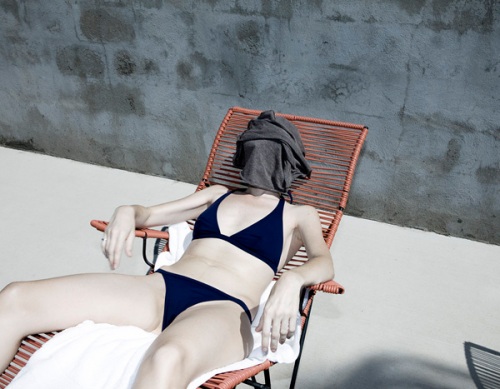
Photo by Noah Kalina
POP: How involved in social media are your artists?
All of my newest artists are very active online. Corey Arnold and Noah Kalina are something of internet celebrities. JUCO is also very active in the internet photo community. They all have blogs that tell you more about who they are. Noah Webb uses his blog to show his looser, less formal work. Amy Martin is a mad genius tweeter. The internet just provides a more accessible way of getting to know who these people are and what inspires them, what interests them, what they are playing with and considering. There’s a back story supplied, a fuller picture and extension of who they are.
Everything you put out in the world is an opportunity to say more about who you are and is another avenue for a client or editor or art director to connect with who you are and what you make. Just more reasons to find you compelling and hire you.
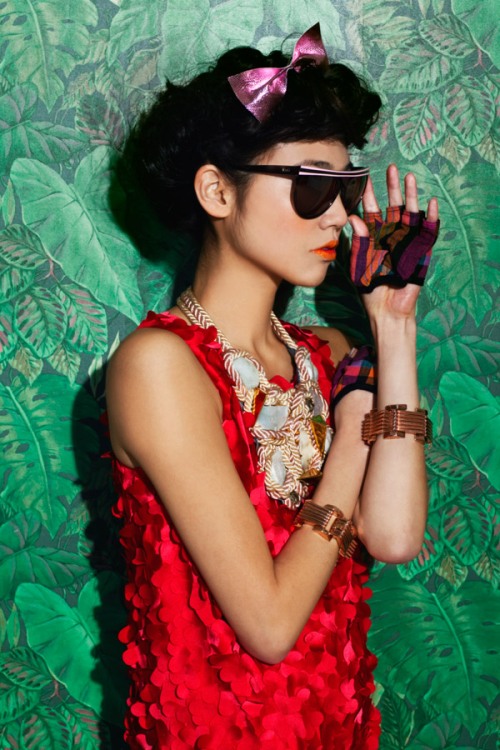
Photo by JUCO
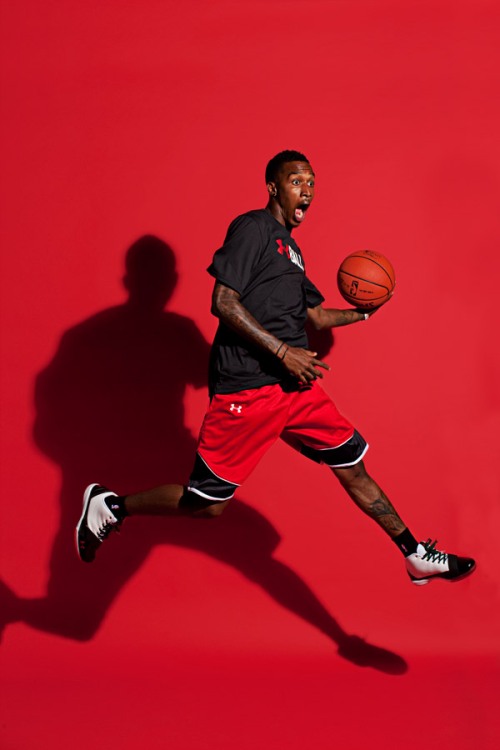
Photo by JUCO
POP: You mentioned that you’re doing more treatments when you bid for a job. Is this becoming a standard request or are you doing it even when it’s not specified?
Yes, people are pretty reliant on websites these days and don’t want to pay or have time for the shipping of books very often. And there’s so much work out there and so much specialization, that sometimes we want to custom edit applicable work for a client, and bring a horse to water, if you will. We used to just do it when asked, but at this point we preemptively send a custom PDF, tailored to the campaign or project at hand, because it helps if a client can visualize your work in their context. I can’t tell you how effective it has been!
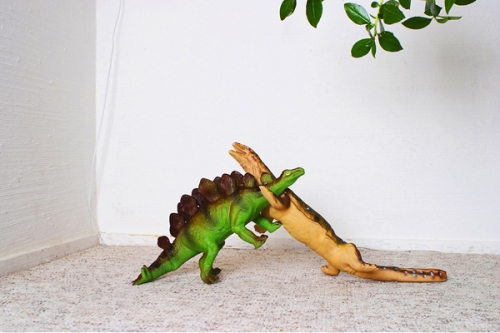
Photo by Meiko Arquillos
Filed under: Photo agent interview, Photo rep interview | 1 Comment
Tags: Amy Martin, Corey Arnold, Elena Dorfman, Juco, maren levinson, Meiko Arquillos, Noah Kalina, Noah Webb, Redeye Represents, Zen Sekizawa
This interview features an anonymous source. An in-house photographer at a magazine and web publishing company. Most of my interviews feature commercial, freelance photographers and the discussions revolve around inspiration, personal vision, the road to success and specific jobs. For a primarily editorial shooter, and even a catalog or commercial photographer, an in-house gig could be a smart move. Our source also sees more companies hiring in-house as they see the cost benefits and value of having a photographer on staff who knows the brand and functions as a key member of the visual branding team.
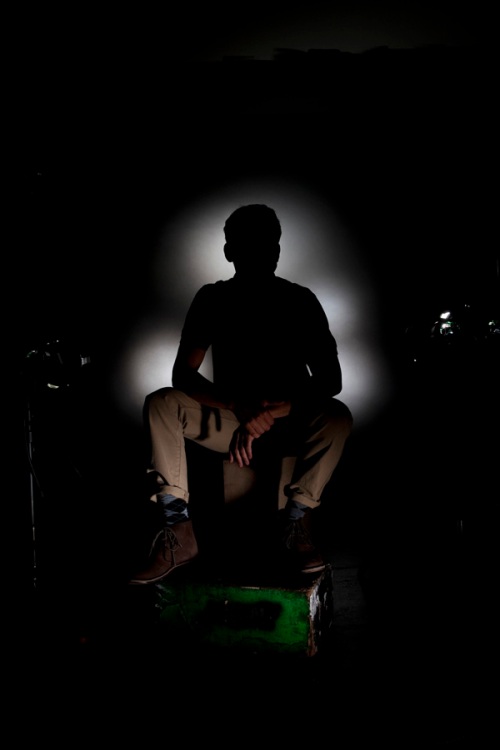
Before that conversation gets under way though, his answer to the question “How did you get your start?” is a long and harrowing tale of a road punctuated with magazine launches, magazine closings, repeated strokes of good luck, microwave nachos and what he learned from assisting a photographer whose big trick was using the Hose Master to light law book catalog photos.
The story ends happily with our source landing a job as an in-house editorial photographer for one of the leading mid-sized publishers. Remaining anonymous, he shares the good, the bad and the ugly of running an in-house photo studio at a company with multiple internal clients. There are no photos in this one since the source is anonymous, but plenty of great stories, insider info and insights into where editorial photography is headed and the opportunities for both photographers and publishers.
A big thank you to our anonymous contributor for so much time and work on this without any gain for him beyond the sharing of information and the hope that it might inspire or inform others and add to the conversation. The beginning is a long read, but some of it was so funny I couldn’t bring myself to edit it down. Enjoy and please share or comment – although anonymous, he is happy to answer questions.
POP: Where did you get your start and how did you decide to go in-house rather than freelance?
I was going to community college and didn’t know what I wanted to do. Thought I’d do two years and transfer to UC, but also wanted to do something creative. I was always a visual person and a couple friends of mine were doing photography. One as a hobby shooting skateboarders. The other, who would later become my wife, was going to art school.
I decided to pick up a camera and try it myself. I started taking classes and after a year I ran into someone from the skate scene I’d known from high school who worked for the biggest skate magazine in the country at the time. They needed a guy to work in the darkroom and I became the darkroom tech. I also started shooting music for their music section. I was going to local shows and big shows like Lallapooza and also shot product for them – skateboards, trucks, wheels. I did that for four years. But I didn’t feel I would become the kind of photographer I wanted to become if I stayed there.
At the time, I was primarily interested in photojournalism and knew this wasn’t the place to do this. But I was also worried about how to make a living. I didn’t have family money or anything to fall back on and knew I had to pull it off or not and this influenced a lot of my decisions. It was difficult to see journalism as a way to make a living and I wanted to explore all of photography. I knew the first thing to do was to start assisting.
I then had another random run-in with an old high school friend who was assisting a photographer. He talked him up as if he was doing a lot of big work when in the end he was doing a lot of actor’s head shots. He was the best at it at the time, but it was head shots. He also had one commercial client, a publisher that produced law books. We did these really meticulous product shots of textbooks. Sometimes they were environmental—a book on a desk with a blotter and a fancy pen. And sometimes a product shot of books and their spines. It was all shot on 4×5 transparency.
The fanciest he got with it was when he decided to use a Hose Master. The guy who invented it was kind of genius. It’s basically painting with light. It’s a box with a fiber optic hose and a nozzle that takes different attachments that give their own quality of light. You use different filters in front of your lens with extremely long exposures. We would do multiple long exposures on one sheet of film. Sometimes the exposures took 20 minutes. You’d light each part with a different filter or light nozzle. It was really tedious.
But despite the fact that it was head shots and law books, he was extremely meticulous and it taught me a lot. We retouched and spot toned all the head shots. So as mind numbing as it was, it was a good lesson in being extremely patient and getting something right the first time. The complete opposite of the way I shoot now digitally where you can shoot one rough sketch after another very quickly. But even when shooting digital, I bring the same attention to detail I learned early on. It can be a real joy to slave over a tiny highlight on the most mundane subject. It’s kind of meditative, almost a Zen practice.
Continue reading ‘THE INSIDE MAN: Q&A with an IN-HOUSE PHOTOGRAPHER’
Filed under: editorial photographer interview, editorial photography, In-house photographer | Leave a Comment
Tags: editorial photographer interview, in-house photographer, in-house photographer interview
Q&A With JMI Reps ASHLEY KLINGER
I love interviewing reps. I get to know and feature the work of multiple photographers. And the shared appreciation for photography and photographers makes for fun conversations marked by many meandering tangents as we discuss their photographer’s work and particular images. My interview with Ashley Klinger of JMI Reps was no exception as she represents some of the top talent in the US and abroad and has found her calling bringing together business savvy and a love of photography.
Ashley Klinger is the owner of the New York photo agency JMI Reps. Purchased in 2009 from Judith Miller, Ashley has spent the past two years building on Judith’s tradition of providing personal service while growing the agency to represent 18 photographers shooting in a wide range of categories from still life, conceptual, beauty, food, kids, and landscape, among others. She has added international talent and signed new photographers she couldn’t let walk out the door even when her roster was full, all while reinventing the agency and assuring that the reputation the agency was built on is the foundation that takes it to the next level.
Driven and passionate about the business and her photographers, Ashley was at the same time open, flexible, engaging and very fun and easy to work with. I imagine this equanimity contributes greatly to her success and to her ability to strike the fine balance necessary to steer a highly-respected agency brand into the future.
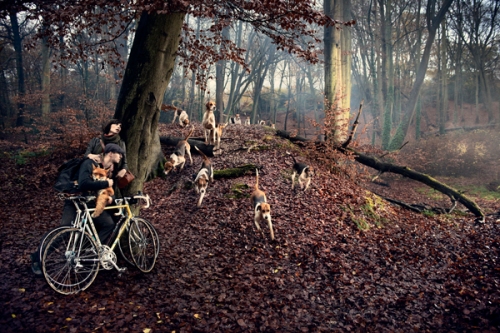
Photo by FRANK HERHOLDT
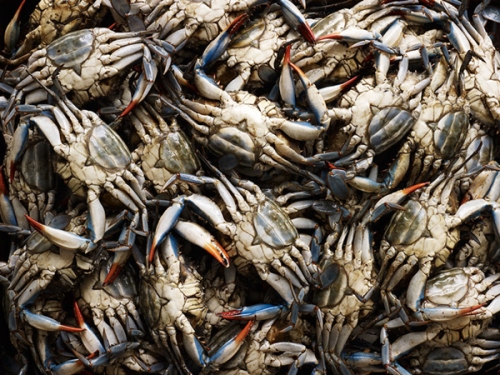
Photo by MARCUS NILSSON
Ashley spoke with POP about the vision for her agency, building her roster and what she looks for in new talent, and what she loves about her job and how she stays inspired. And of course about her roster of incredibly talented photographers. Thank you Ashley for all your time and for sharing so many insights into your business and so much great work with POP!
POP: What was your path to becoming a rep?
I studied photography in college at the University of Michigan. The Art Department specialized in fine art, so I never knew this whole world existed. I never wanted to be a photographer, but I fell in love with it at school! But I didn’t think it was possible for me to do what I loved while still working in the business world. I met Judy Miller after I graduated, and applied for the job. We clicked right away and as soon as I started, I realized that this was what I wanted to do with the rest of my life. It married my passions of photography with business perfectly!
Judy Miller had run Judith Miller Inc. for about 15 years after she had gotten her start with B&A Reps. (Bernstein and Andruilli). After working for Judy for 6 years, (since 2003) I bought the company in 2009. I re-branded and became JMI. It is the same business, but with my new personal spin on it! We have a lot of the same photographers, but a lot of exciting new enhancements.
We are still in the process of re-branding.
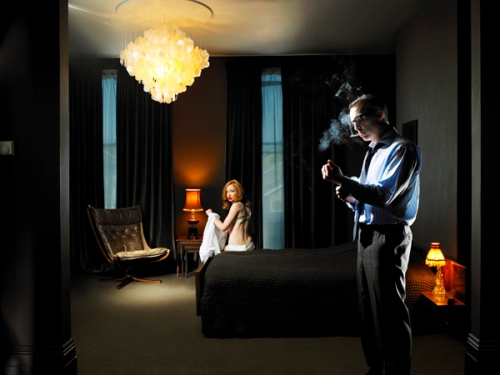
Photo by FRANK HERHOLDT
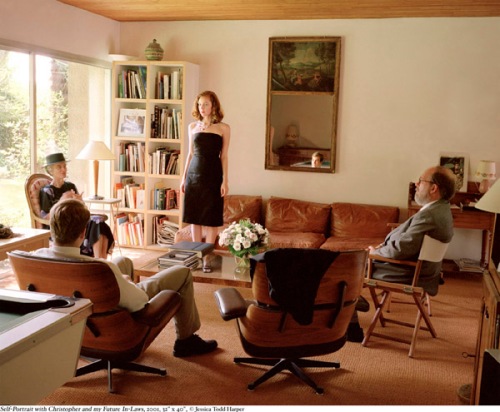
Photo by JESSICA TODD HARPER

Photo by JAMES MERRELL
Filed under: Photo agent interview, Photo rep interview | 3 Comments
Tags: Amy Postle, Ashley Klinger, David Sykes, Dew Sackheim, ericka mcconnell, Frank Herholdt, Hugh Hartshorne, Hugh Stewart, James Merrell, Jessica Todd Harper, JMI Reps, Judith Miller, Lajos Geenen, Lee Clower, Lucy Schaeffer, Marcus Nilsson, Mike Newling, Mikkel Vang, Morten Smidt, Sue Parkhill, Tom Watson